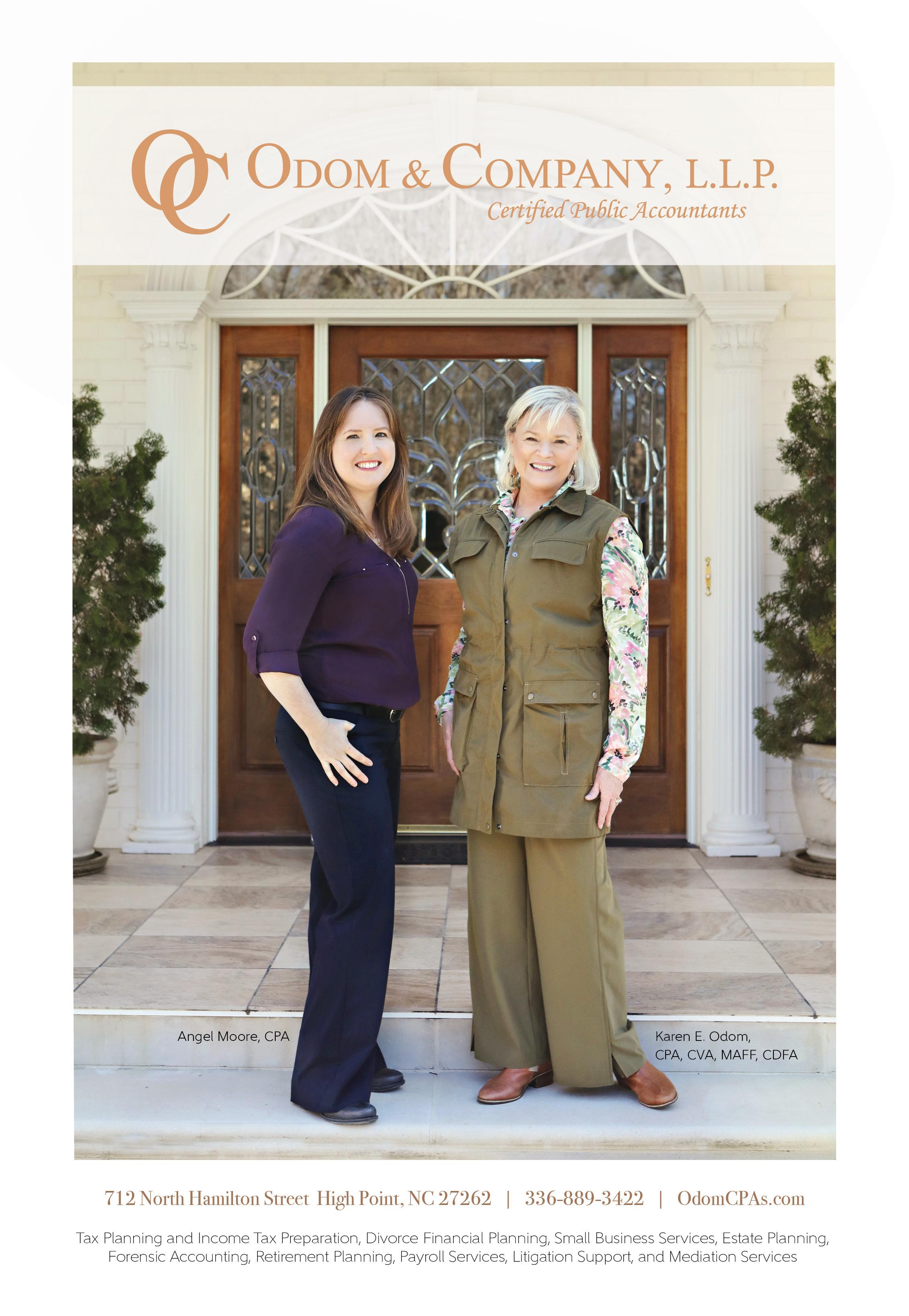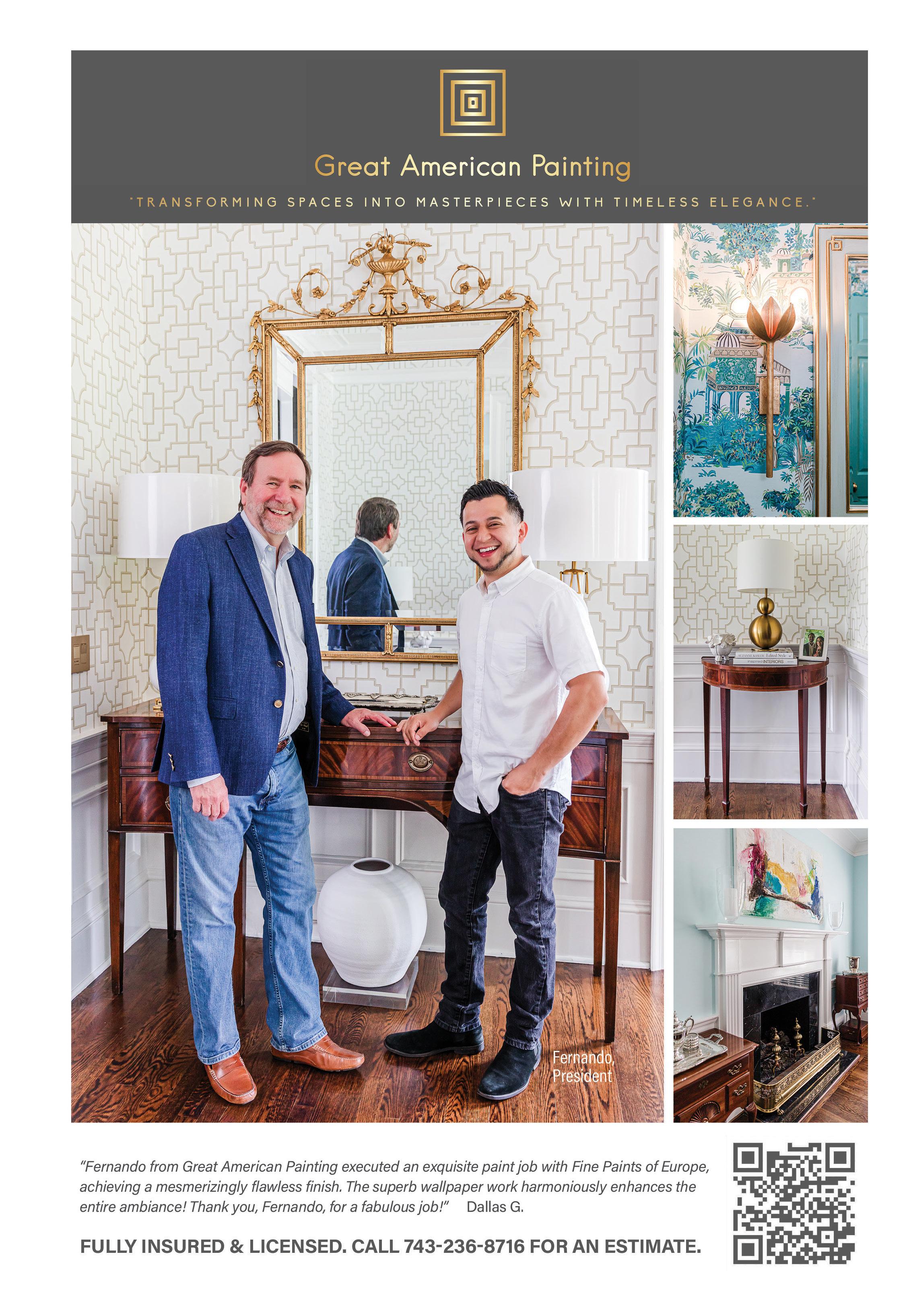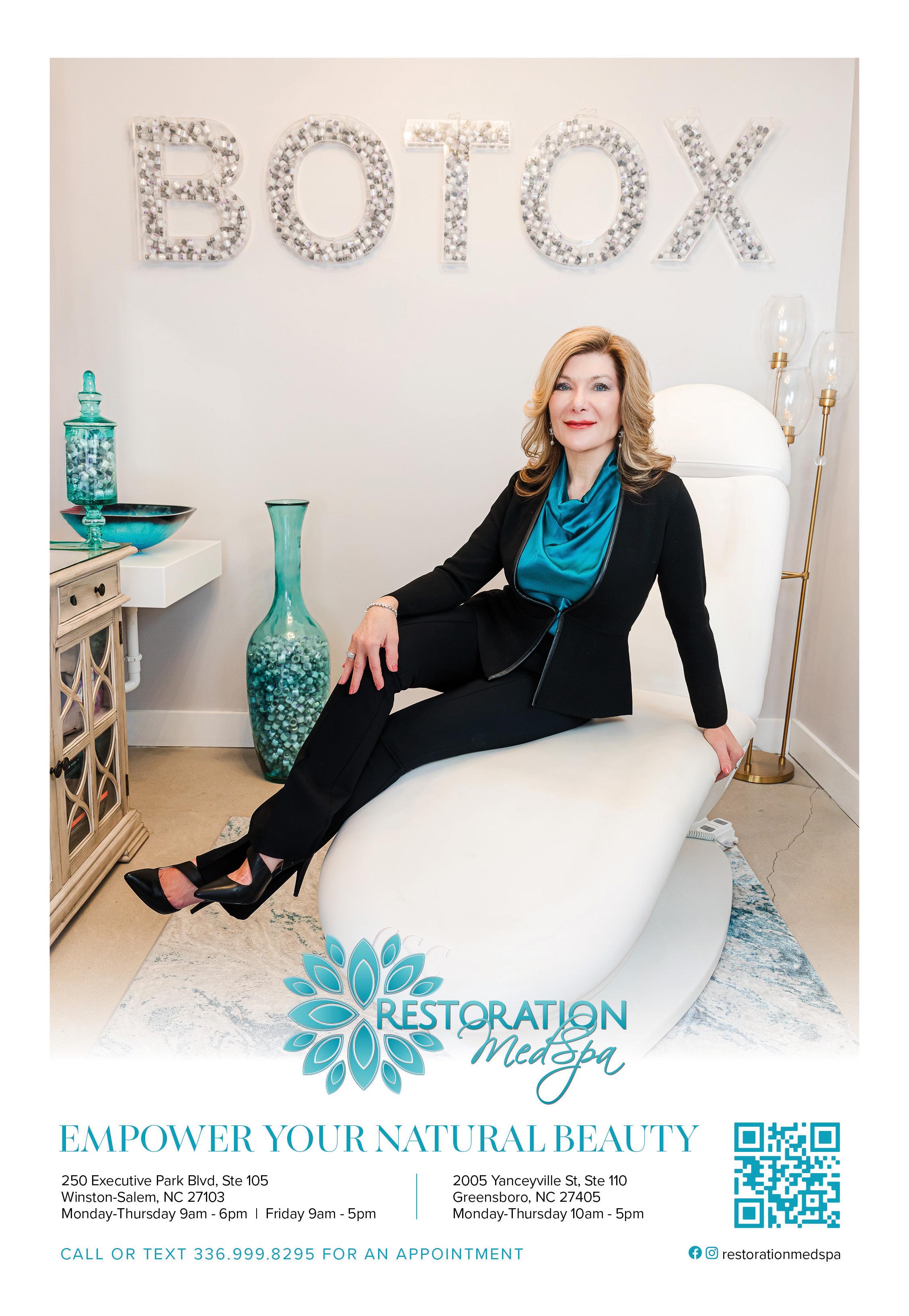Greensboro, High Point and Winston-Salem’s Curated Lifestyle & Design Magazine
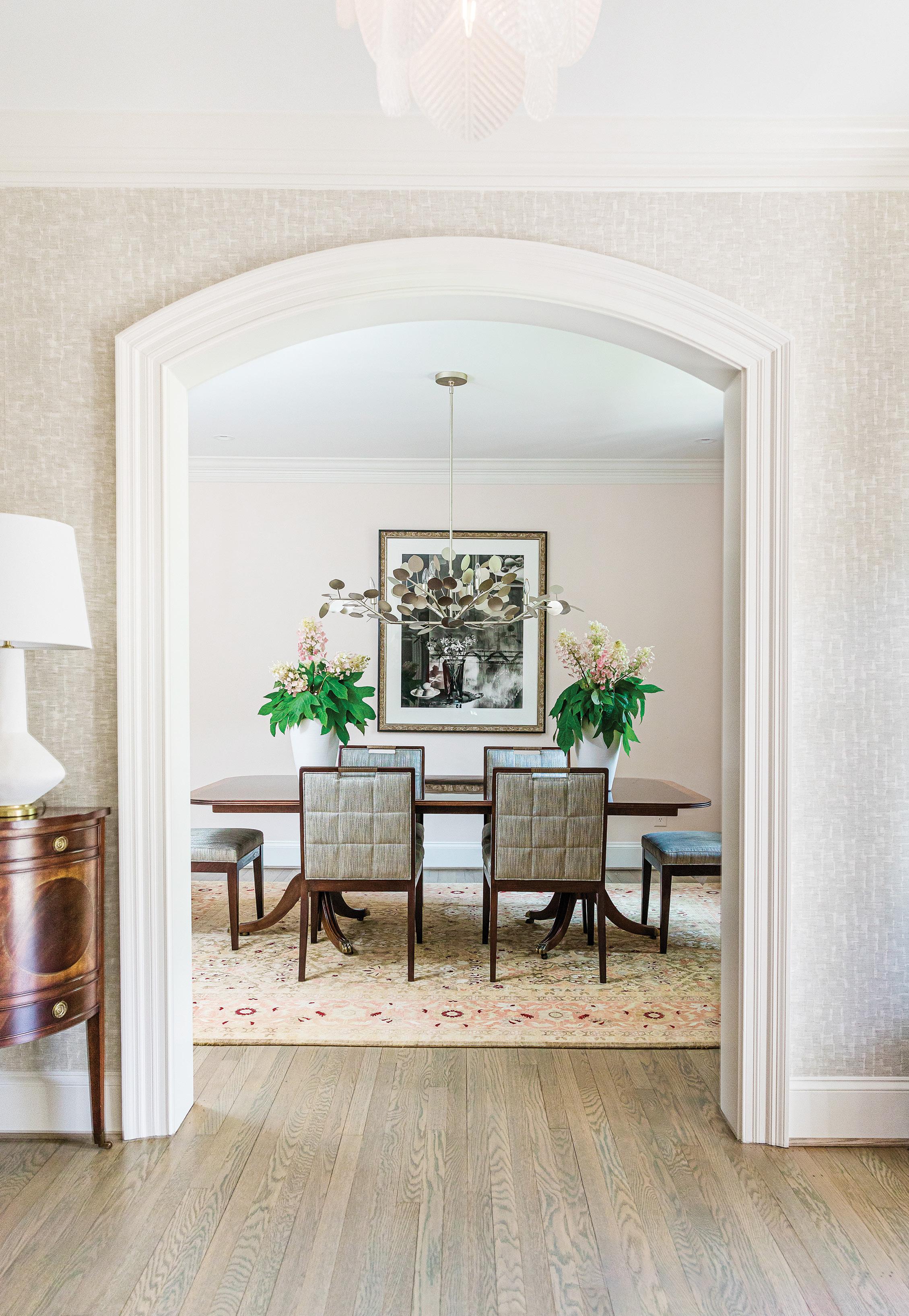
CULTIVATED STYLE


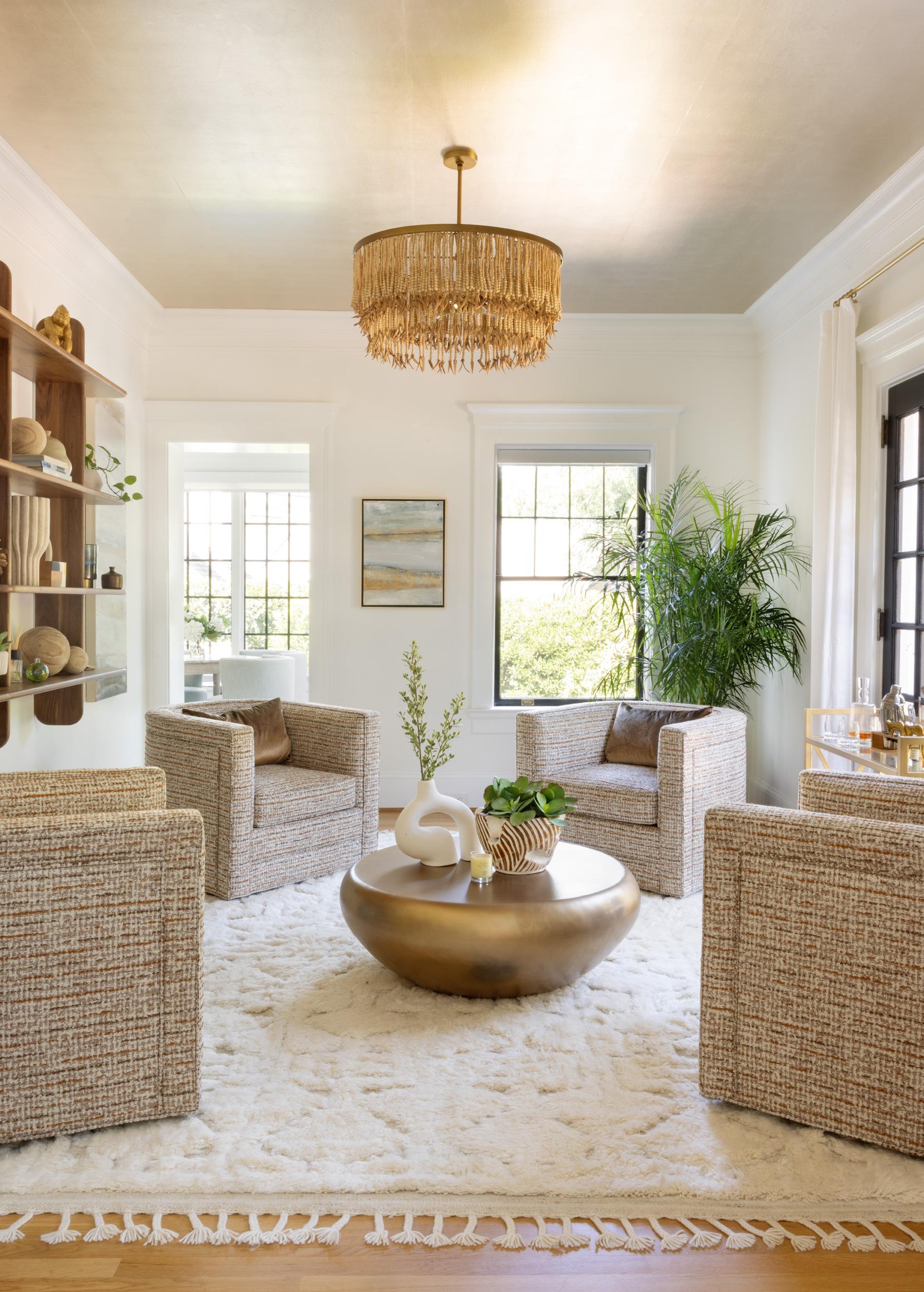

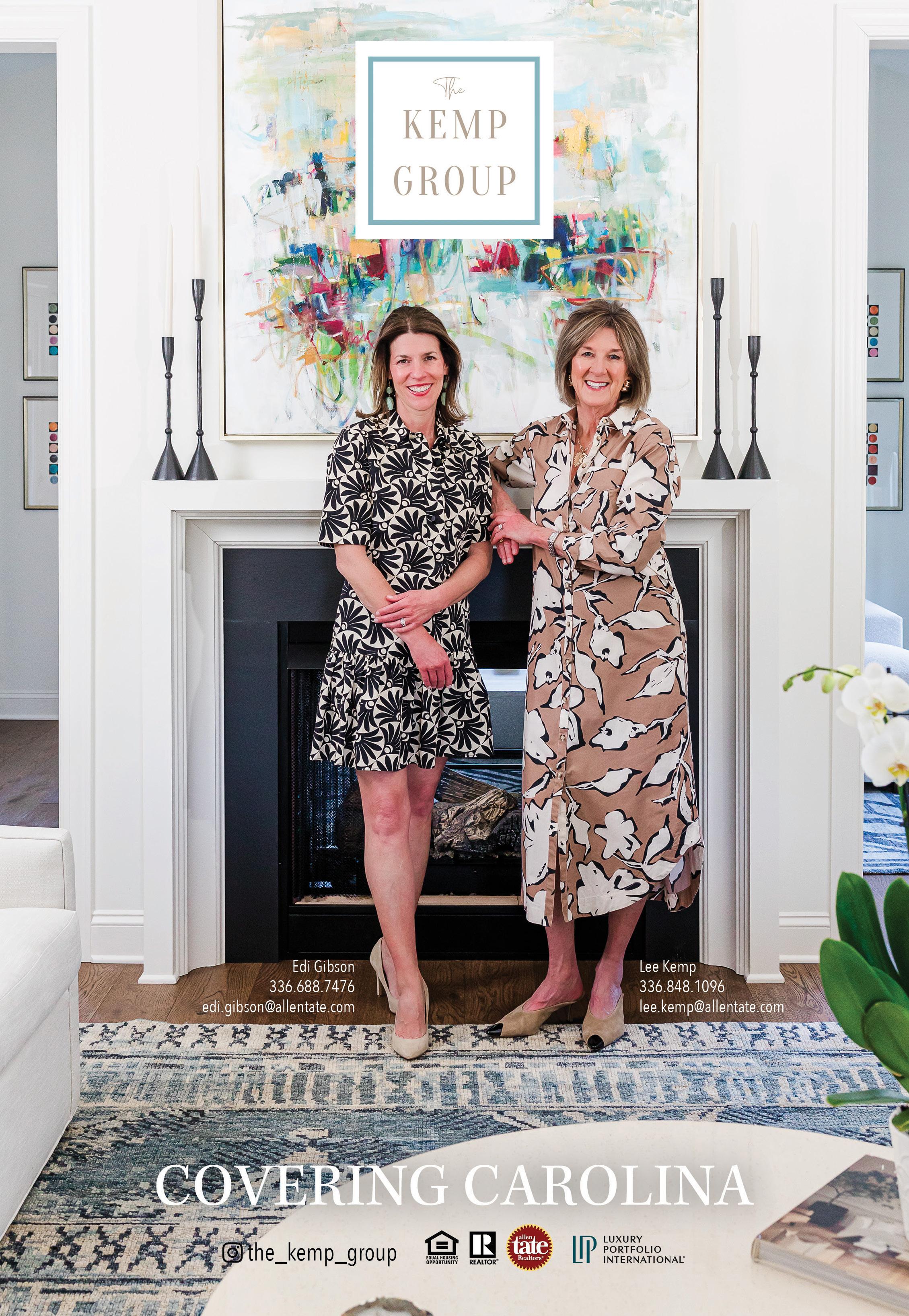

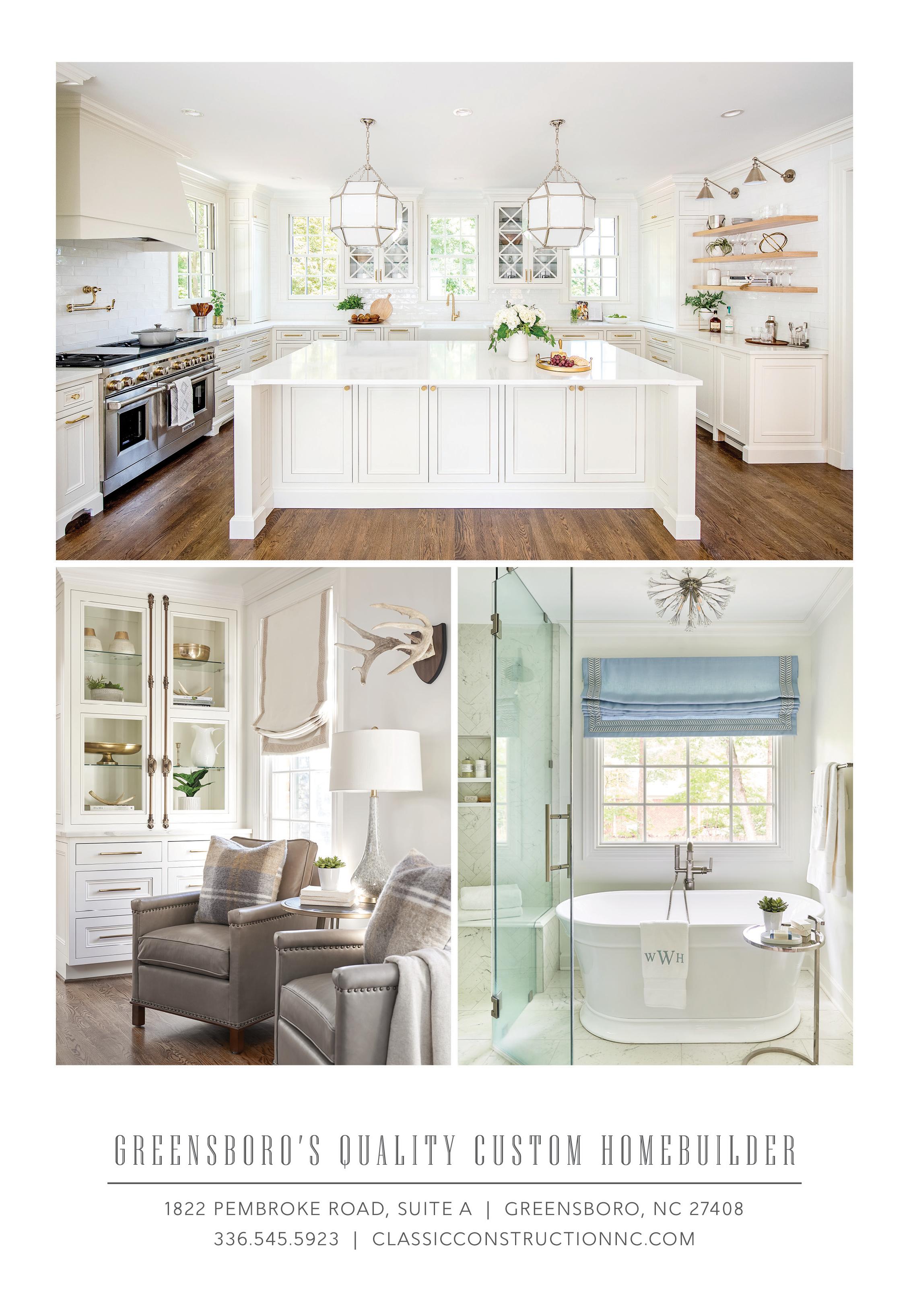
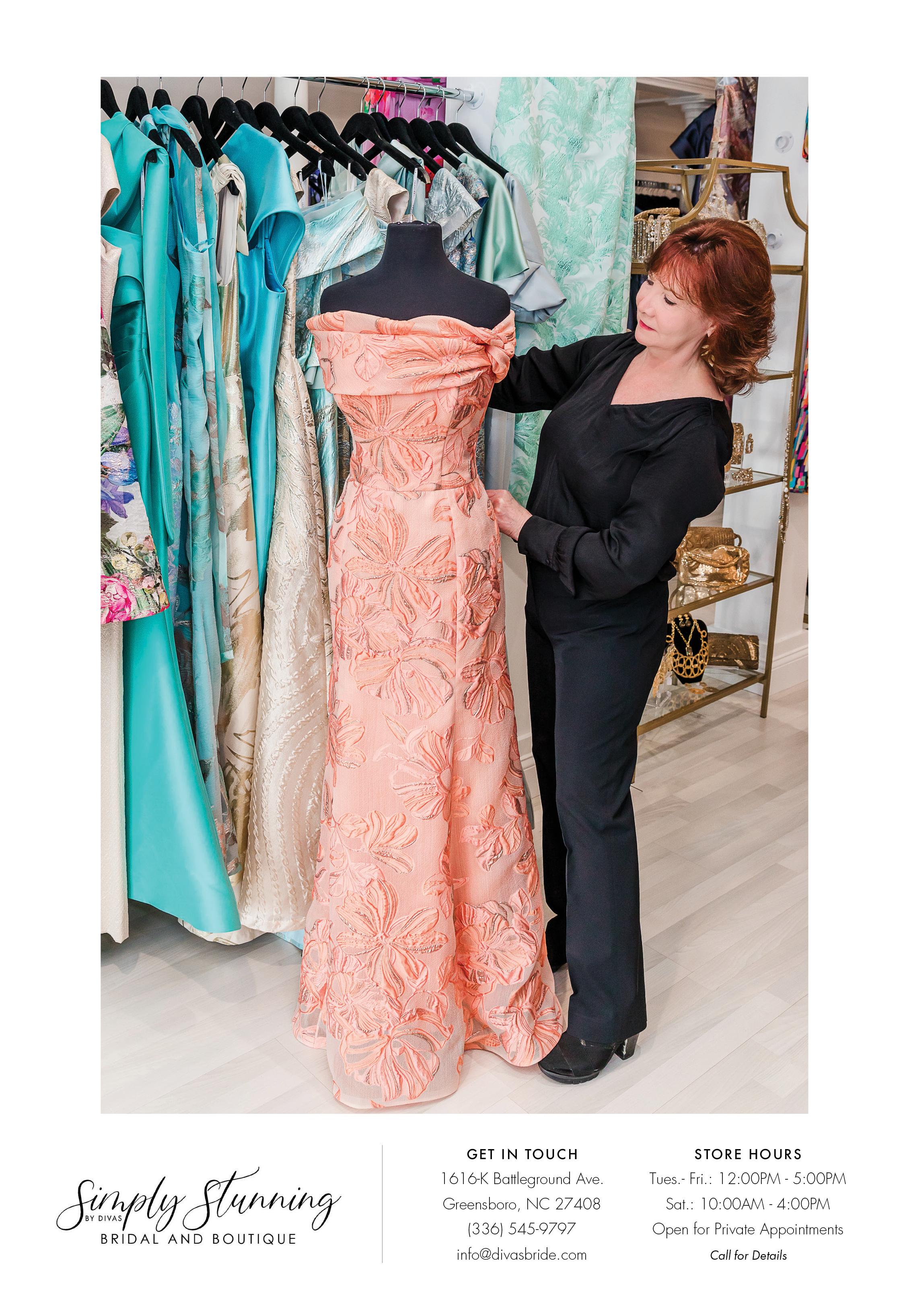
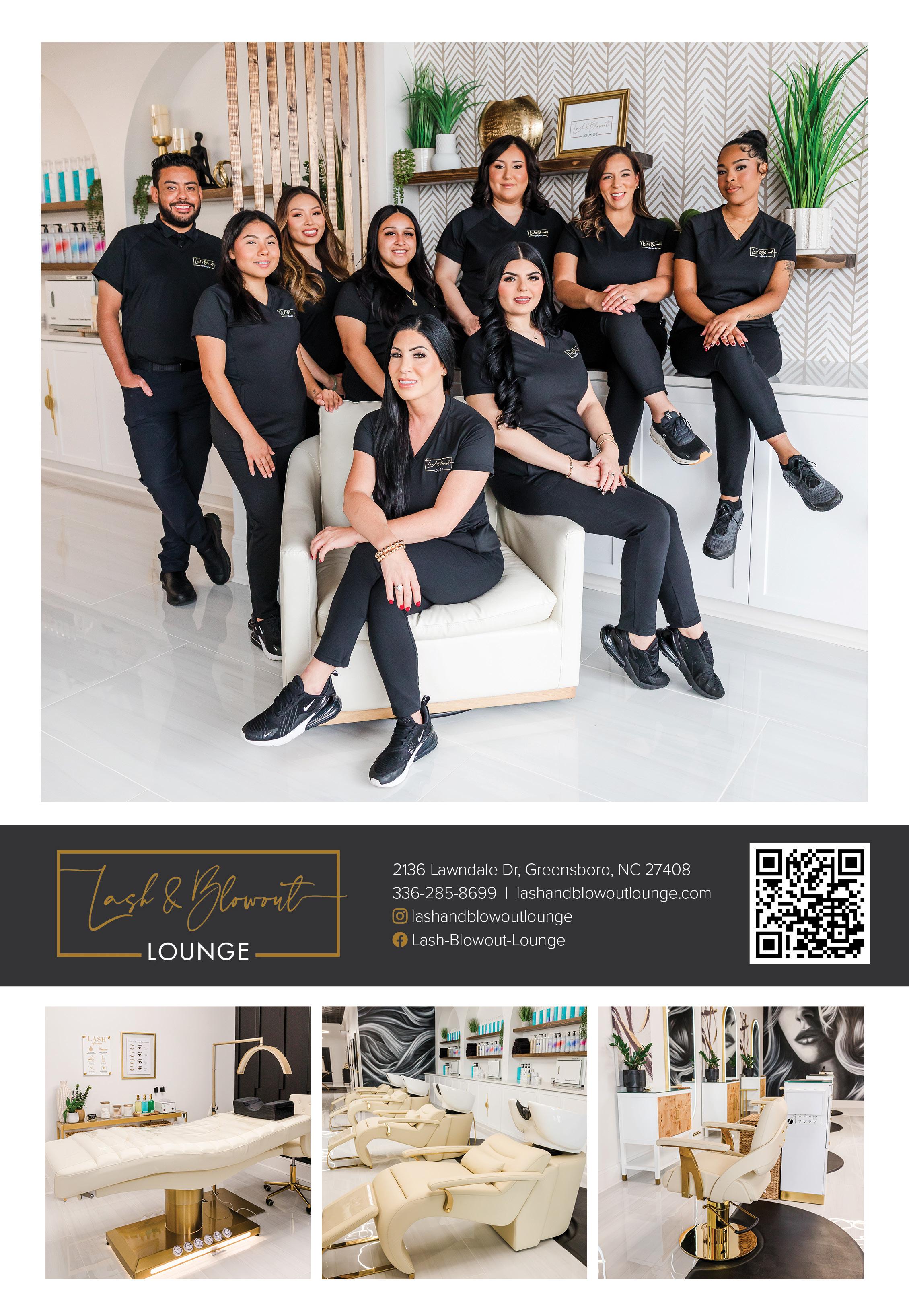




Greensboro, High Point and Winston-Salem’s Curated Lifestyle & Design Magazine













Greetings MOD readers! As we embrace the changing season, welcome to another beautiful issue. We’re grateful to share this space with you.
This issue celebrates transformations and new beginnings. From personal journeys to creative inspiration, these stories remind us that positive change can happen at any stage of life.
Take this Greensboro family who’s been working with the same contractor, Pat Parr from Classic Construction, for almost 20 years. The homeowners have completely transformed their 1928 house multiple times, and their story shows what happens when you find someone you really trust to bring your vision to life.
I loved talking with Keri Epps-Rashad from NC REALTORS. She’s spent her whole career focused on making real estate more welcoming for everyone through her diversity advocacy work, and you can tell she genuinely cares about the people she works with across North Carolina.
Then there’s Marcy Newton, who went from being a kid who just wanted to drive the golf cart to winning national championships and playing on the LPGA Tour. Now she’s back in High Point teaching golf at Jamestown Park, which feels like the perfect ending to her story.
For our Book Club section, I sat down with author Meagan Church. She writes historical fiction about women whose stories were nearly forgotten, and her books will definitely make you think differently about the past.
Susan Campbell discovered something about herself when her kids moved out—she had more creative energy than she knew what to do with. That’s when she started South 23rd, her plant cover business, turning fabric into something both practical and beautiful for outdoor spaces.
We’ve also got tips from The O’Brien Gallery on how colors can change the feel of your house.
Restoration MedSpa explains their approach to helping people feel confident about how they look, with personalized treatments and the latest technology at both their WinstonSalem and Greensboro locations.
I hope you love reading these stories as much as I enjoyed hearing them.

Kathryn Smith, editor-in-chief
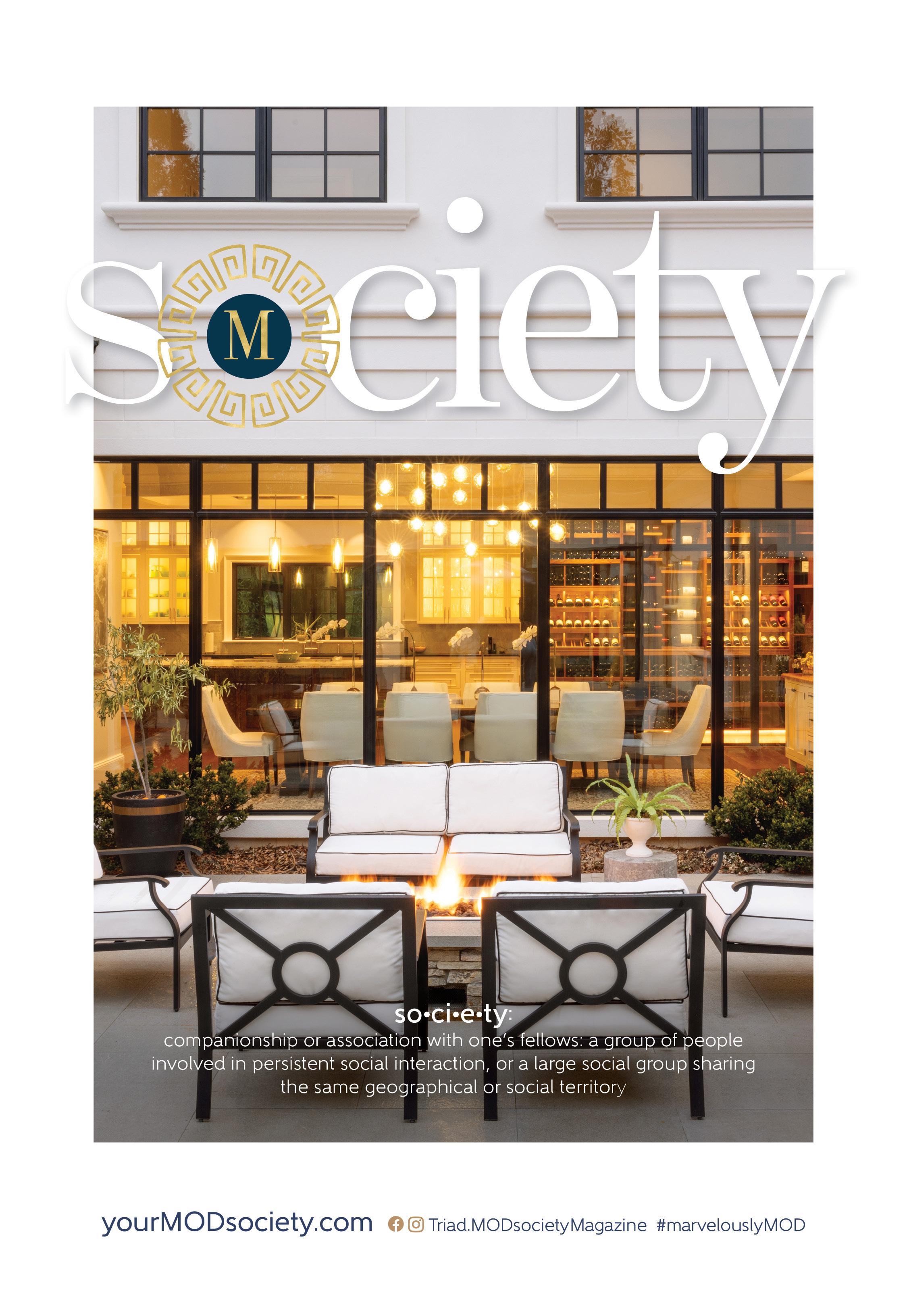


A Greensboro family describes how their 20-year relationship with contractor Pat Parr has helped them reinvent their home again and again.
Restoration MedSpa explains how they help people look and feel their best with custom tailored treatments.
Marcy Newton’s golf story started as a kid on a golf cart, took her to the LPGA Tour—and brought her back home to teach at Jamestown Park.
Keri Epps-Rashad talks about her work making the real estate world more welcoming for everyone who walks through the door. 48
Susan Campbell turned her empty nest years into South 23rd, a business creating plant covers that make outdoor spaces both prettier and more practical.
The O’Brien Gallery shows how the right colors can make your house feel like a completely different place.
Author Meagan Church writes about the women history almost forgot—and why their stories matter.


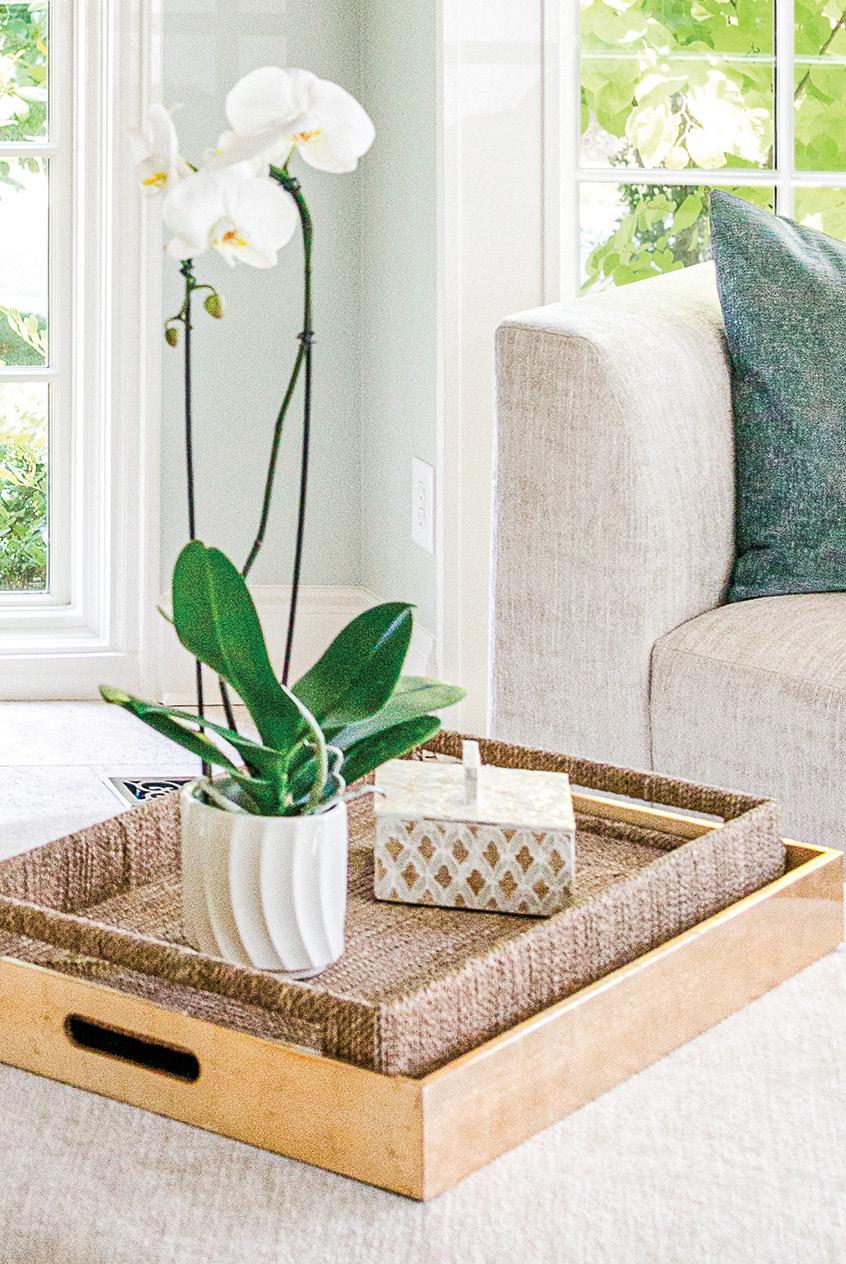
The relationship between a Greensboro family and Pat Parr of Classic Construction of North Carolina, Inc. spans nearly two decades and several major renovations of their 1928 Sunset Hills home. The beautiful wire-cut exterior brick house, with its classic lines and lasting appeal, has become what Pat calls “one of the prettiest houses in the neighborhood.” Their latest collaboration tells the story of trust, transformation and exceptional craftsmanship.

Twenty-four years ago, Pat Parr founded Classic Construction with a vision that extended far beyond typical contracting. After graduating from the University of North Carolina at Chapel Hill with a degree in business and marketing, he spent several years in California working with general contractors across the state. “I remember thinking, ‘I could do this better,’” Pat says. That conviction, coupled with a desire to return to the East Coast, sparked the creation of what would become one of Greensboro’s most trusted names in high-end residential renovation.
What sets Classic Construction apart isn’t just their craftsmanship but also their approach. “We want to build a relationship. We want to collaborate with you and work with you, give you what you want, give you ideas and make your dream come true,” Pat explains. This personal philosophy has created a client base that feels more like an extended family than a customer list.
At the heart of Classic Construction’s success lies something most contractors don’t possess: their own mill workshop. “We’re a high-end custom residential general contractor. We do all our millwork—all the crown moldings, casings and baseboards. Our built-ins and cabinets are built and finished like furniture,” Pat explains. This in-house capability gives them complete control over quality and ensures every piece fits perfectly with each home’s character.
The homeowners describe Pat’s team not as contractors, but as “artists.” This careful attention shows in every aspect of their work, with team members taking whatever time is needed to achieve perfection.
Whatever you expect when finished is better than what you envisioned it could be...
The homeowners explain, “The thing that initially drew us to Pat was his overall demeanor and personality. He was just very easy to get along with.” They had interviewed several other contractors before choosing Pat, and they have never regretted their decision. “His taste levels are five-star. And we got to know him through the first project. So when we got ready to do this most recent project, we didn’t even consider anybody else.” What began 18 years ago as a massive addition nearly doubled the home’s size and included a complete primary suite and extensive first- and second-floor additions.
The results consistently exceed expectations. “Whatever you expect when finished is better than what you envisioned it could be,” the homeowners note. This track record of delivering beyond what clients imagine has built Pat’s reputation through referral and repeat business.
When the homeowners returned to Pat for their most recent project, they surprised him with something completely different from their original classical style. What started as a simple kitchen and family room update evolved into a comprehensive transformation of nearly the entire main level. “They wanted to take the house in a really different direction,” Pat notes. “It was fascinating that after all those years, their tastes had changed. They went from very classical architecture to more of an updated, cleaner, more transitional type of look.”
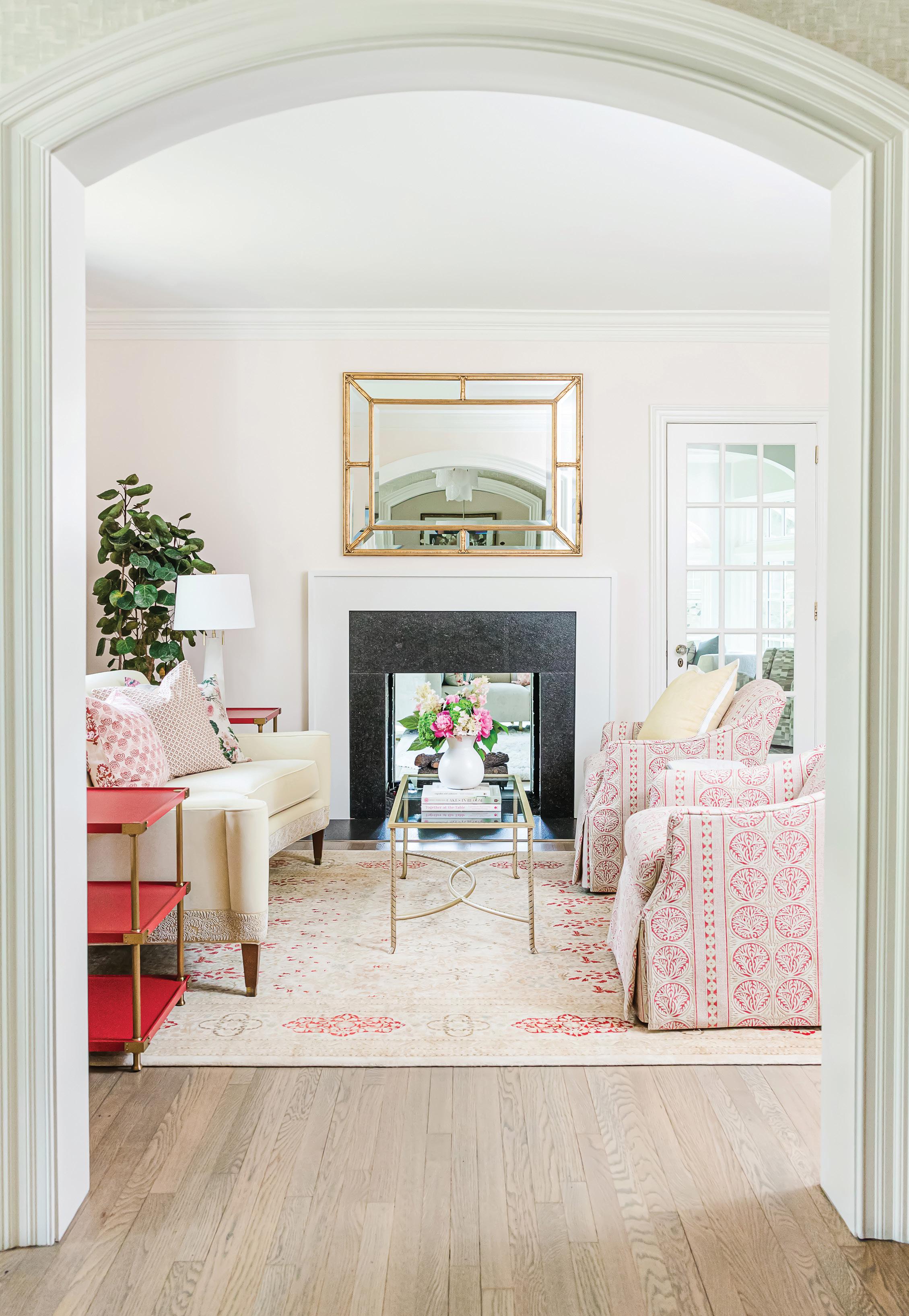
The transformation encompassed the kitchen, living room, dining room, office area and sunroom, plus new pantry and laundry spaces. Even a powder room received updates with new shelving, wallpaper and fixtures. The family room, which had been beautifully finished during the original work with built-in shelving around the fireplace, received minor updates to complement the new design while preserving its classic charm.
The kitchen transformation converted classical elements into contemporary lines, a dramatic departure from the style Pat had created in their first major renovation. The family chose to completely gut the original kitchen to make way for their evolved vision. To achieve a modern, sleek look for the kitchen cabinets, Pat chose rift-sawn white oak with a light stain to pull out the wood’s natural grain. This specialized cutting technique keeps the grain lines tight and uniform, creating a distinctively beautiful pattern throughout the wood. Stone countertops and backsplash create visual continuity throughout the space, while modern conveniences are thoughtfully integrated.
The dual-sided fireplace between the sunroom and living room became a focal point of the project. Vertical rift-sawn white oak panels rise toward a vaulted ceiling, separated by what appears to be stone but is actually expertly applied faux painting. Pat’s team first dry-installed the paneling, allowing the homeowners to see the complete look before taking the pieces back to their workshop for finishing. Above, the vaulted ceiling features distinctive wallpaper with a cork-like texture that adds warmth to the space.
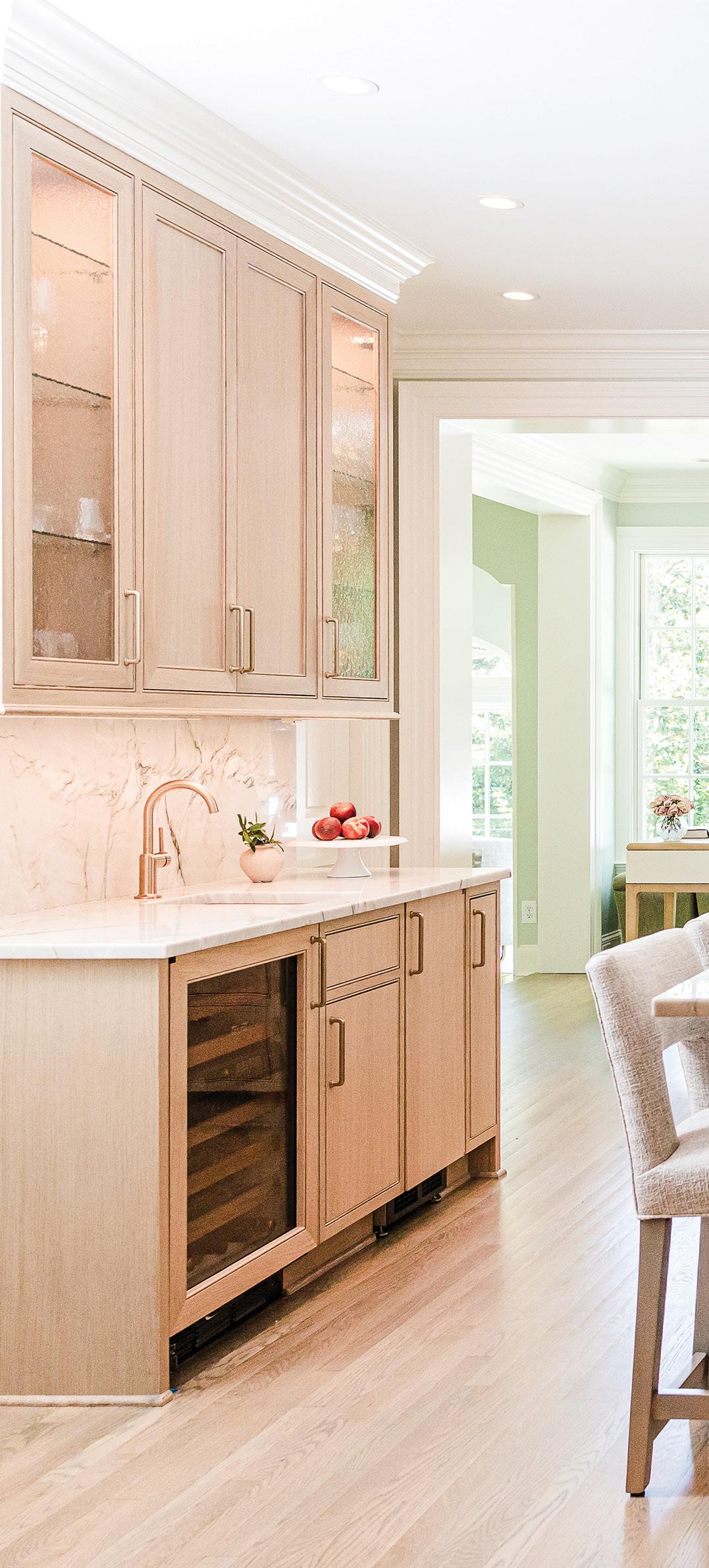

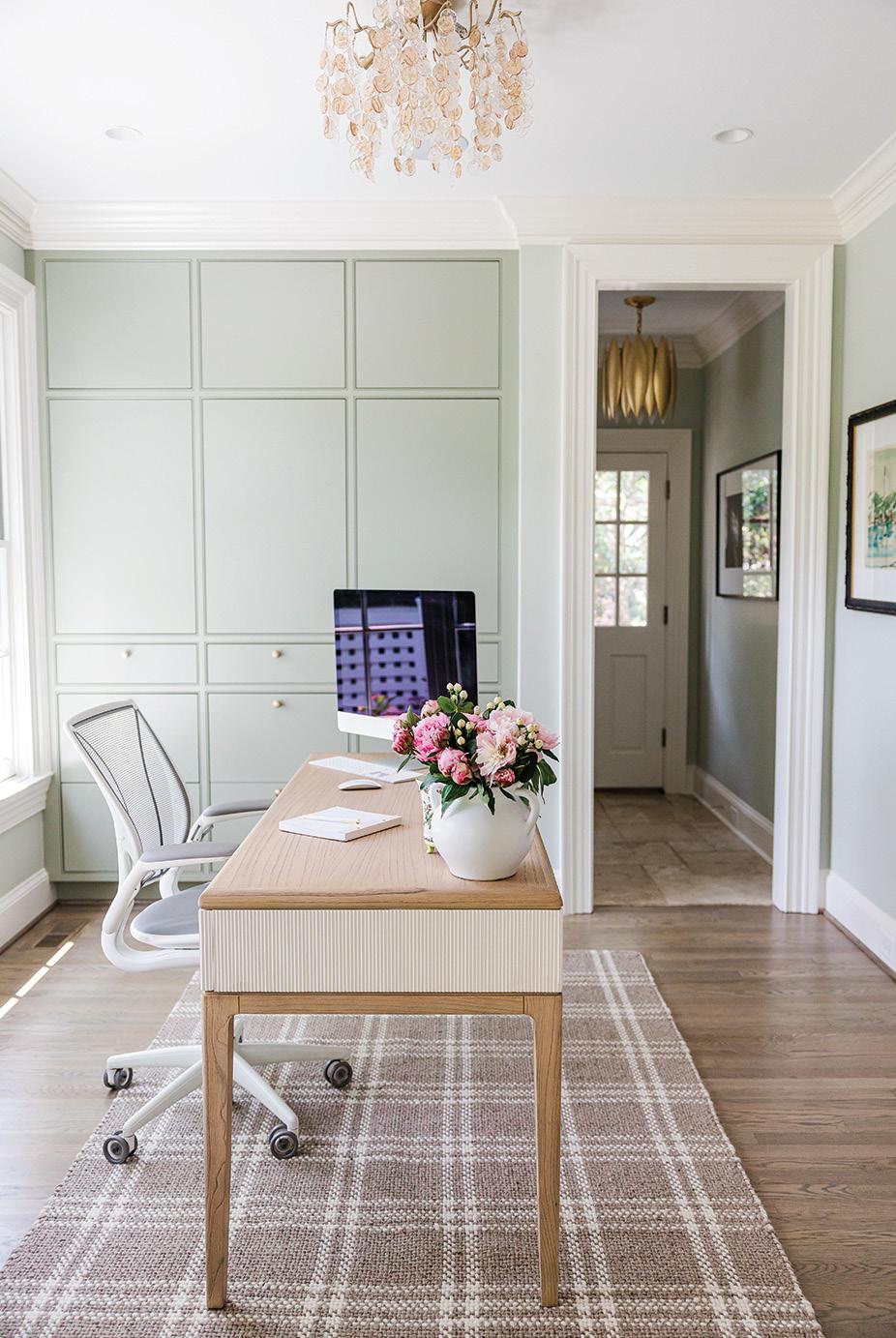

The office area showcases Classic Construction’s expertise with floor-to-ceiling built-ins featuring ingenious hidden compartments. Push-latch panels conceal printers, filing systems and household supplies.
Lighting became a crucial element throughout the project. “That was something that was extremely important to them,” Pat explains. New fixtures and carefully planned illumination changed how each space feels and functions.
Even the floors tell their own story. The original oak floors, installed during the first project, were refinished with a subtle whitewash treatment to complement the new cabinetry. The technique maintains the wood’s character while creating harmony with the updated design.
The success of these projects stems from more than craftsmanship, but collaboration. The homeowners emphasize how Pat’s integrity and openness made
even challenging decisions feel natural. When Pat suggested expanding the scope from two rooms to the entire downstairs, they trusted his vision completely.
“Everything that he and his team recommended that we do, we never regretted,” they recall.
Pat works regularly with interior designers and architects, creating teams that enhance rather than complicate the process. For this project, the homeowners worked with their own interior designer, but they consistently returned to Pat’s team for guidance and expertise.
Classic Construction’s commitment to preservation extends beyond individual projects. “We stay in keeping with the house and the neighborhood and people; they really like that. We’re involved with Preservation Greensboro, and coincidentally, there was a tour recently, featuring a few of our homes. People appreciate the fact that we want to preserve all we can and still give the homeowner what they want,” Pat explains. This attention to detail shows in their careful handling
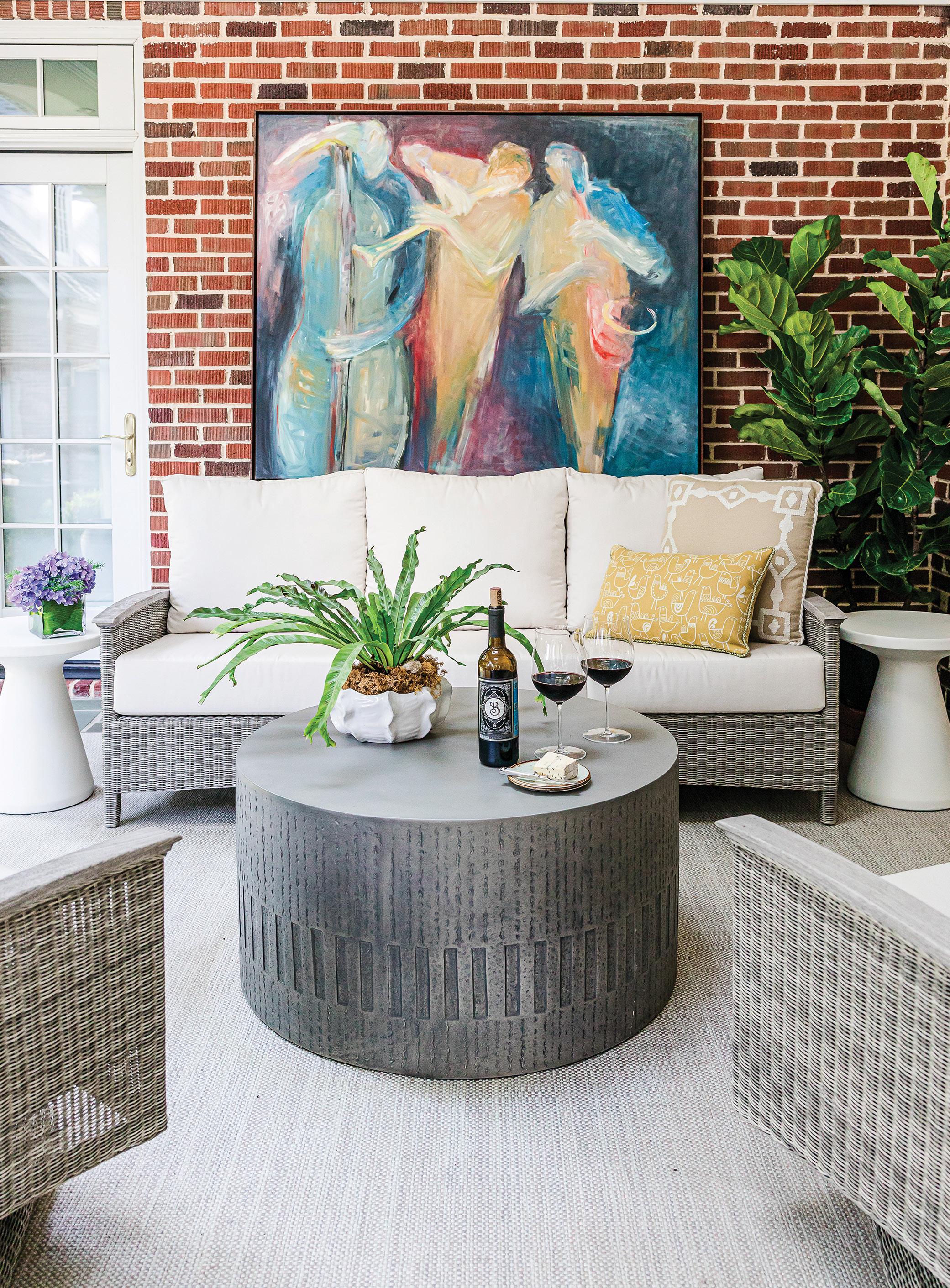
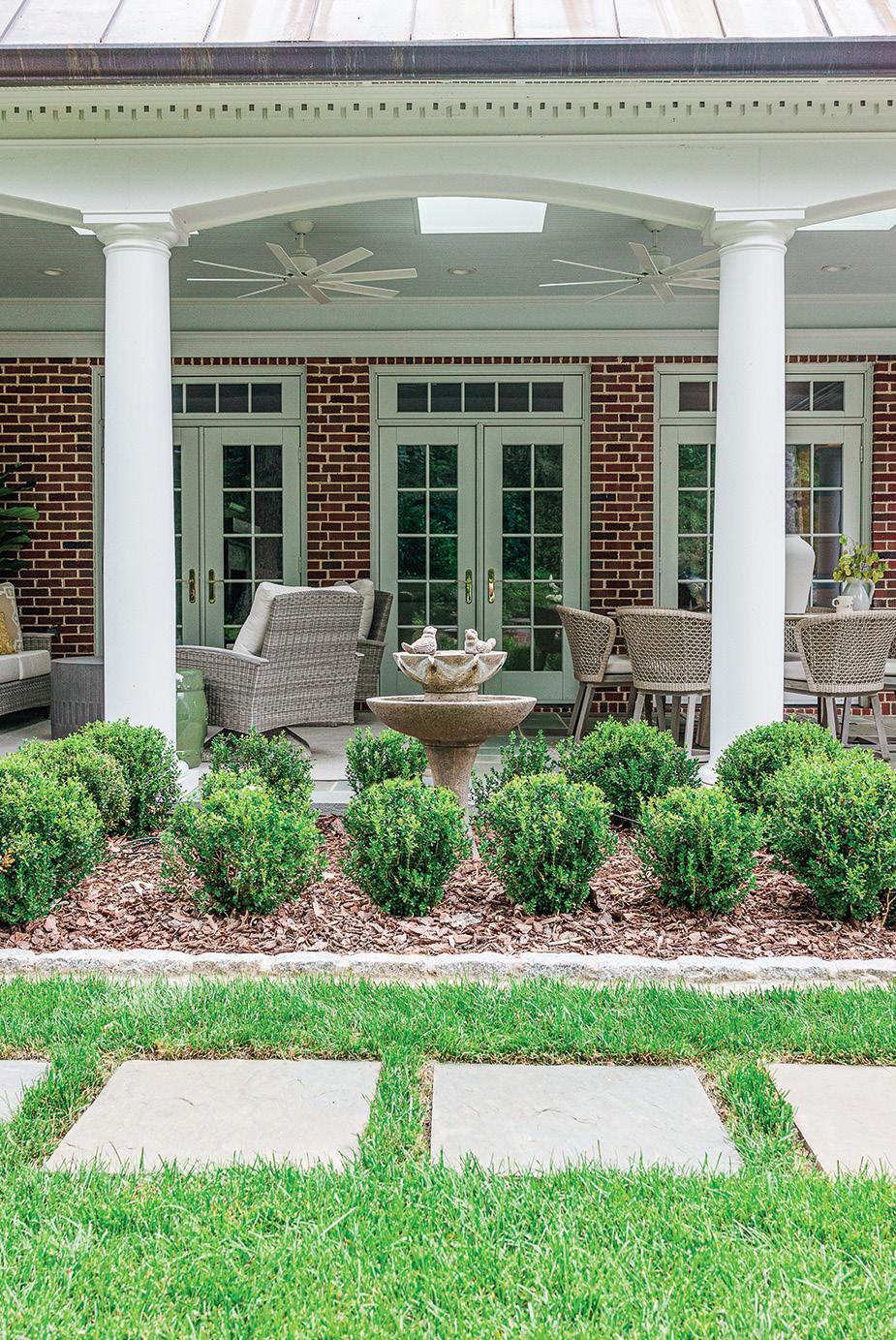
of original materials—door hardware gets removed, numbered and restored for reinstallation. When matching existing brick, they will stain new materials and tint mortar to achieve perfect integration.
The results speak for themselves throughout the property. “If you drove up to our house, you can’t tell where the old was and where the new began,” the homeowners explain, and this seamless integration extends to their outdoor spaces as well.
A few years ago, they completed extensive outdoor projects. The covered porch, with its distinctive scalloped copper roof and columns with bluestone edging, and an outdoor fireplace area demonstrate Pat’s attention to both function and architectural detail. “Pat’s hardscape team was incredible as well,” the homeowners note. “They’re just meticulous about everything they do.”

Classic Construction understands that renovation is as much about people as it is about construction. Living through multiple major remodels could strain relationships, but these homeowners describe each experience as genuinely enjoyable. They praise Pat’s crew for being professional and pleasant to work with. When challenges come up during complex projects, Pat’s response is straightforward and reassuring, simply focusing on finding solutions rather than dwelling on problems.
When cabinet doors came out slightly off-shade during the recent project, most contractors might have dismissed the concern. Pat’s response was immediate: they redid all of them. This willingness to go beyond what’s expected, even when it means additional work and expense, shows how Classic Construction works.
The relationship extends far beyond project completion. “We consider him a close friend, a great contractor and a good resource,” the homeowners conclude. “The level of craftsmanship Classic Construction delivers is just exceptional.”
Pat’s philosophy remains straightforward. “I always tell people, if you show me a picture of it, I can do it,” he says. But what really counts is making homes that work for the people living in them. The homeowner, drawing from his business experience, recognized something rare. “One of my mantras was always deliver more than you promised. And that’s what Pat does.” For this family, Pat has created something remarkable, a home where old and new work perfectly together.
– Kathryn Smith, editor-in-chief
BUILDER: Classic Construction of North Carolina, Inc. Cover: Dining Room
Page 16-17: Living Room
Page 19: Sunroom
Page 21: Family Room
Page 22-23: Kitchen Page 24: Office (left) Powder Room (right) Page 25: Covered Porch Page 26: Covered Porch (top) Patio (bottom)
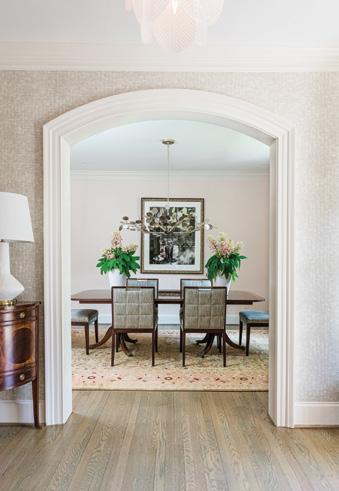
Kathryn
Marisa Faircloth, PA-C Kathy O’Brien
COPY EDITOR
Jennifer Weaver-Spencer
DIRECTOR OF PHOTOGRAPHY
Brand and Bloom Photography
LAYOUT AND DESIGN
Crystal Staley
ADVERTISING
Advertising@yourMODsociety.com


At Restoration MedSpa, we take pride in offering a comprehensive and personalized approach to enhancing your natural beauty. With locations in Winston-Salem and Greensboro, we are committed to helping you achieve your aesthetic goals through expert care, innovative technology and a focus on individualized solutions.
This year, we have added new services and refined existing ones to provide an even better experience for our clients. Enhancements include new and updated equipment, extended consultations, advanced skin analyses, flexible payment options and our new Restoration MedSpa App—all designed to elevate your experience with us.
While Botox® and dermal fillers remain popular treatments, we go far beyond these. Our extended consultations use state-of-the-art technology to thoroughly evaluate your skin, examining factors like pigmentation, sun damage, vascular health, acne and more. This detailed analysis helps us create customized treatment plans that address multiple concerns simultaneously, ensuring natural and lasting results.
Our team-based approach truly sets us apart. With over 40 years of experience as a board-certified physician assistant, I’ve assembled an exceptional team, including physician assistants, a nurse practitioner, licensed medical aestheticians, a CoolSculpting specialist, a medical director and a tattoo artist specializing in permanent makeup. Our collaborative approach ensures every aspect of your care is seamlessly coordinated for superior outcomes.
To make your journey even more accessible, we offer payment options including Allé Pay, powered by Cherry. This program offers flexible payment plans tailored to suit every budget. Our Restoration MedSpa app further enhances your experience, enabling you to track purchases and earn loyalty points redeemable for services or gift cards.
Excellence is not just our goal—it’s our standard! By staying at the forefront of advancements in aesthetic medicine, we ensure you receive the best possible results. Whether you’re looking to rejuvenate your skin, enhance your features or maintain a youthful appearance, we’re here to guide you every step of the way.
Visit us in Winston-Salem at 250 Executive Park Boulevard, Suite 105, or in Greensboro at 2005 Yanceyville Street, Suite 110. Call or text us at 336-999-8295, or visit RestorationMedSpa.com to start your journey today.
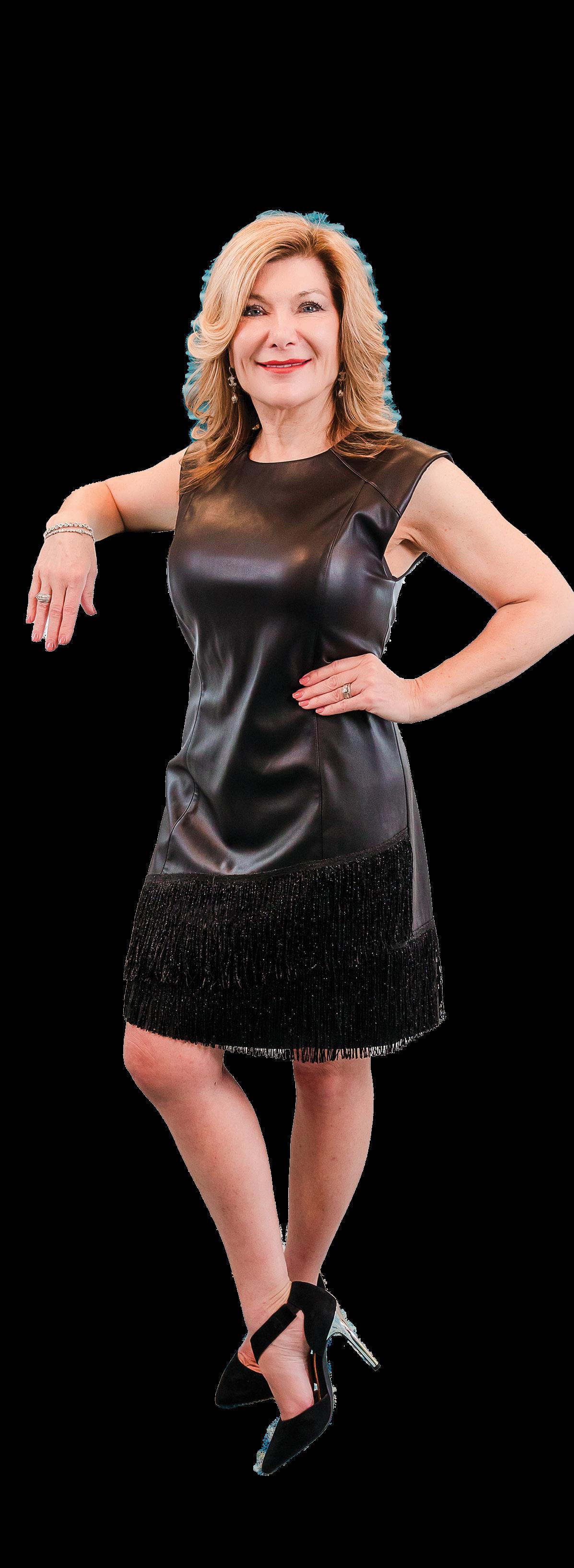


When Keri Epps-Rashad walks into a room, something shifts. Her colleagues at NC REALTORS call her “the connector,” and within minutes of meeting her, you understand why. “I want people to feel good and comfortable,” she explains. “If you’re having a bad day, I want to be part of the brightness on that day.”
For 18 years, Keri has been the Director of Strategic Partnerships and Diversity Advocacy at NC REALTORS. She travels across the state to North Carolina’s 45 local associations, but her approach is uniquely personal. “My primary goal is to build relationships throughout the community and throughout our association,” she explains. Keri has transformed the real estate industry by building genuine connections across communities.
This gift for making people feel seen and valued stems from her deep understanding of what home really means. “Home is peace. That’s where I find my tranquility. Every person should have that feeling, somewhere they can go and feel safe,” she explains. “I always knew that I would be someone who cares and has compassion for people in every walk of life.” This understanding would later shape everything about how she approaches her work and her life.
In 2007, Keri was managing corporate events at Grandover Resort in Greensboro, North Carolina for clients including NC REALTORS when she met Timothy Kent, former Executive Vice President of NC REALTORS. He asked her to consider bringing her energy to realtors across the entire state. “He saw me, and he believed in me,” Keri reflects. Keri joined NC REALTORS that same year, and her role in diversity advocacy was significant because she was a woman of color. “I wanted to make sure that when I traveled across the state, there would be leaders, realtors and businesspeople that looked like me who felt comfortable knowing I was representing them.”
A diversity initiative Keri created around a mosaic theme in 2018, soon became known simply as “Mosaic.” This caught the attention of the National Association of Realtors, who invited her to present this idea in San Diego, leading to expanded “Mosaic” conferences in Charlotte and Wilmington. The name captures her philosophy, “If you see a mosaic, it’s different things that are broken up and will make something beautiful one day. All the little pieces that have fallen apart, bring them together to build something beautiful.”
(HBCUs) across the state, where students have landed internships at broker firms and obtained their real estate licenses through her efforts. She partnered with the Real Estate Commission to create panels, discussions and networking opportunities at HBCUs. “My goal is to make sure that there are students and young professionals who also have this opportunity to be successful,” she explains. “Our motto is, ‘We open doors.’ And that’s not just to homes; that’s also to hearts.”
Looking ahead, she wants to expand this mission through independent consulting, focusing on preparing young women for corporate environments. “Nobody teaches you those ropes when you graduate from college. I want to take you from beginning to end on every phase of what it means to be a woman in a corporate world.”
Do not dim your light so other people’s lights can shine.
Keri sees mosaic-building everywhere now. When the current NC REALTORS president invited WinstonSalem State’s drumline to perform at his inaugural, she told him, “That’s building the mosaic. It’s not a conference or speakers or panels. It’s you allowing those students to come here and perform.”
In 2024, Keri was chosen for a national task force to develop a DEI roadmap for realtors worldwide. “I got a team of realtors from different parts of our state, from everywhere, and I felt so blessed to have the opportunity to represent every other realtor in the world to make sure they had a guideline,” Keri explains.
The challenges she addresses are real and urgent. Housing affordability hits hardest in underrepresented communities, so she advocates through annual trips to Raleigh and Washington, D.C., making sure legislators understand that the housing crisis isn’t just numbers on paper.
Her commitment to opening doors extends to her work with Historically Black Colleges and Universities
Her community work also extends beyond real estate through her involvement with Family Services of the Piedmont and Communities in Schools of High Point. She sees High Point as a model for inclusive community development, particularly because of the city’s international furniture industry. “We have a large furniture industry where people come from all across the world,” she explains. “That allows people here to accept others coming in. We’ve always been very inclusive and diverse as a community.”
Keri has learned that caring for others means caring for herself first. “I used to jump up and dive headfirst into the day, operating at full speed,” she admits. “I had to learn the power of slowing down.” Her mornings now begin deliberately with coffee, journaling and moments of reflection before she pours into others. Her advice comes from hard-won experience: “Do not dim your light so other people’s lights can shine. I did that for a long time. I would get behind the scenes because I felt like it wasn’t deserving for me.”
When asked about sharing her story publicly, her response reveals the heart of her mission, “Right now, I’m focused on building a legacy, not just for myself, but for the next generation of leaders. I want a little brown girl to read this one day and say, ‘If she did it, so can I.’”
– Kathryn Smith, editor-in-chief






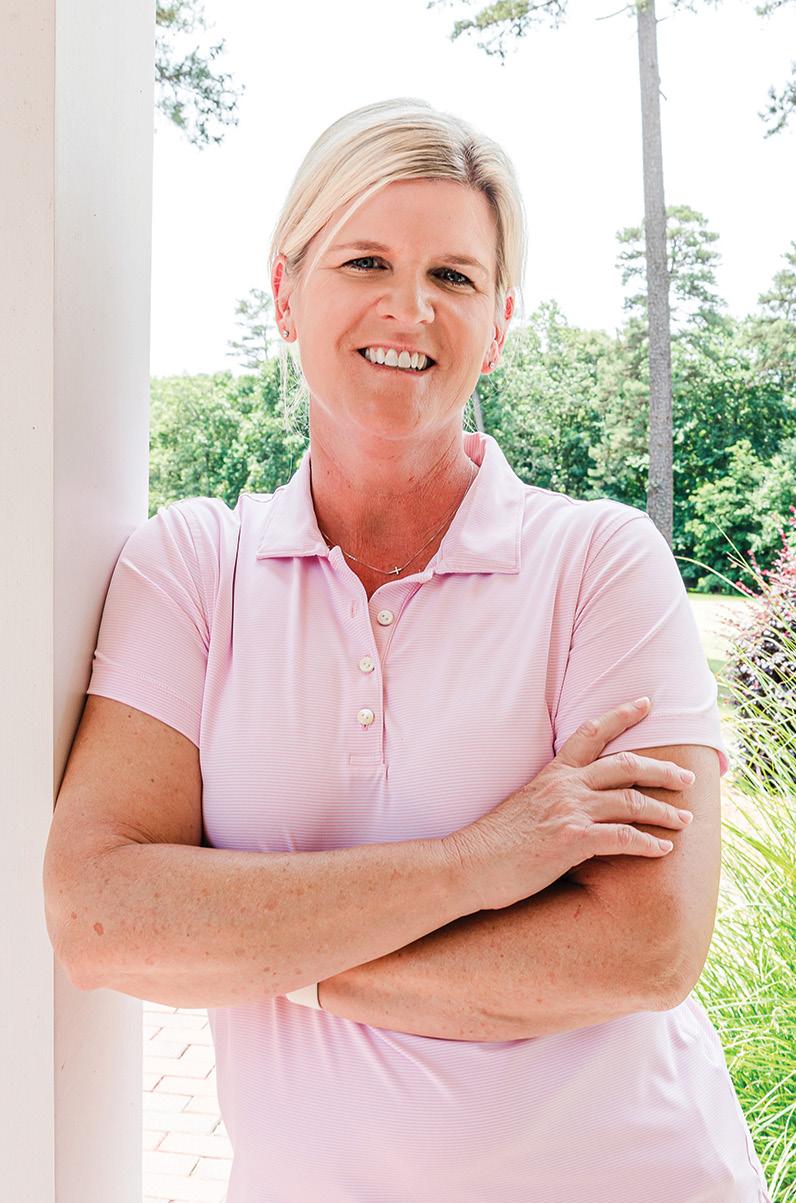
Marcy Newton never set out to become a professional golfer. Growing up in High Point, North Carolina, she was simply a kid who enjoyed tagging along while her dad and brother played their rounds. But sometimes the most meaningful journeys begin without a clear destination, and Marcy’s story is proof of that. She went from curious 10-year-old to two-time national champion, winning both the U.S. Girls’ Junior and U.S. Women’s Amateur titles. From there, she had a 13-year career on the LPGA Tour and is now head golf professional at Jamestown Park Golf Course in Jamestown, North Carolina.
“Honestly, I got into going to the golf course with my dad and brother because I enjoyed driving the golf cart,” Marcy laughs, reflecting on those early days. Everything changed when she was 12 and attended an LPGA event at High Point Country Club’s Willow Creek course. Watching the professionals compete at The Henredon Classic, which later became the Planter’s Pat Bradley International, something clicked. “I really enjoyed watching the women play, and I was like, ‘I think that’s something I would like to do.’”
That moment transformed Marcy’s casual interest into serious dedication. As she excelled at Ledford High School, including winning the 1995 U.S. Girls’ Junior Championship at 17, her path became clear. Marcy set her sights on college golf and eventually the LPGA Tour. Her amateur career reached its pinnacle with the 2000 U.S. Women’s Amateur Championship when she was a senior at the University of North Carolina at Chapel Hill. “I’ll be honest, I think at the time, I didn’t realize how special it was and what an accomplishment it was,” Marcy admits. “I think because as golfers trying to play at the highest level, that’s your goal— to try to win, and that’s what you kind of expect of yourself.”
This mindset carried Marcy smoothly into professional golf. After winning the Women’s Amateur in 2000, she turned pro and earned her LPGA Tour card through qualifying school, beginning what would become a 13-year career.
Professional golf opened up a whole new world for Marcy. While she missed the college team atmosphere, the tour offered its own rewards through individual competition and travel opportunities. “You’re just out there by yourself once you turn pro,” Marcy explains. “So it definitely was different, but being able to travel the world and experience new cultures was very cool.”
assistant golf professional before being named head golf professional in 2023.
Instruction required learning entirely new skills. “A lot of times good players aren’t necessarily good teachers in golf,” Marcy acknowledges. “So I have had to learn that everyone plays differently and has their own strengths and weaknesses.”
Marcy’s teaching philosophy centers on simplicity and honesty. “I learned I couldn’t think about six different things while I’m trying to swing the golf club,” she says, applying that same principle to her instruction.
It’s a very hard game, and you have to be really patient and show yourself a lot of grace...
Marcy is straightforward with students about golf’s challenges while emphasizing its lifelong rewards. Having earned her PGA certification, Marcy has discovered the significant differences between competing professionally and managing a course facility.
“I try to be as honest and open with people. It is a very hard game, and you have to be really patient and show yourself a lot of grace because it’s not something you’re just going to pick up and be good at in a month or even a year,” Marcy explains. “But it’s a great game that you can play almost forever. We have some people in their nineties that are still playing golf.”
For over a decade, Marcy embraced the professional golfer’s lifestyle. But in 2010, her daughter was born. Suddenly, the demanding travel schedule took on a whole new meaning.
“I did not like leaving her at home; it was hard to travel with her, but it was worse to travel without her,” Marcy reflects. “And at that point, a lot of LPGA tournaments were going to Asia, and I just didn’t have the desire to leave her and be away from home so much.”
By 2013, Marcy made the difficult decision to step away from professional competition. She transitioned to instruction, starting as an assistant professional at Tanglewood Golf Club in Clemmons, North Carolina. She later joined Jamestown Park as an
Now that her 14-year-old daughter plays golf, Marcy has gained a new perspective on her own achievements. Her past championship wins opened doors to a professional career filled with experiences and opportunities she never could have imagined. Marcy’s path through amateur success, professional competition and teaching demonstrates how golf stays with you through different stages of life. The sport that once focused on individual achievement now gives her the satisfaction of helping others grow. It’s a different kind of success, one measured not in trophies but in sharing its challenges and rewards.
– Kathryn Smith, editor-in-chief
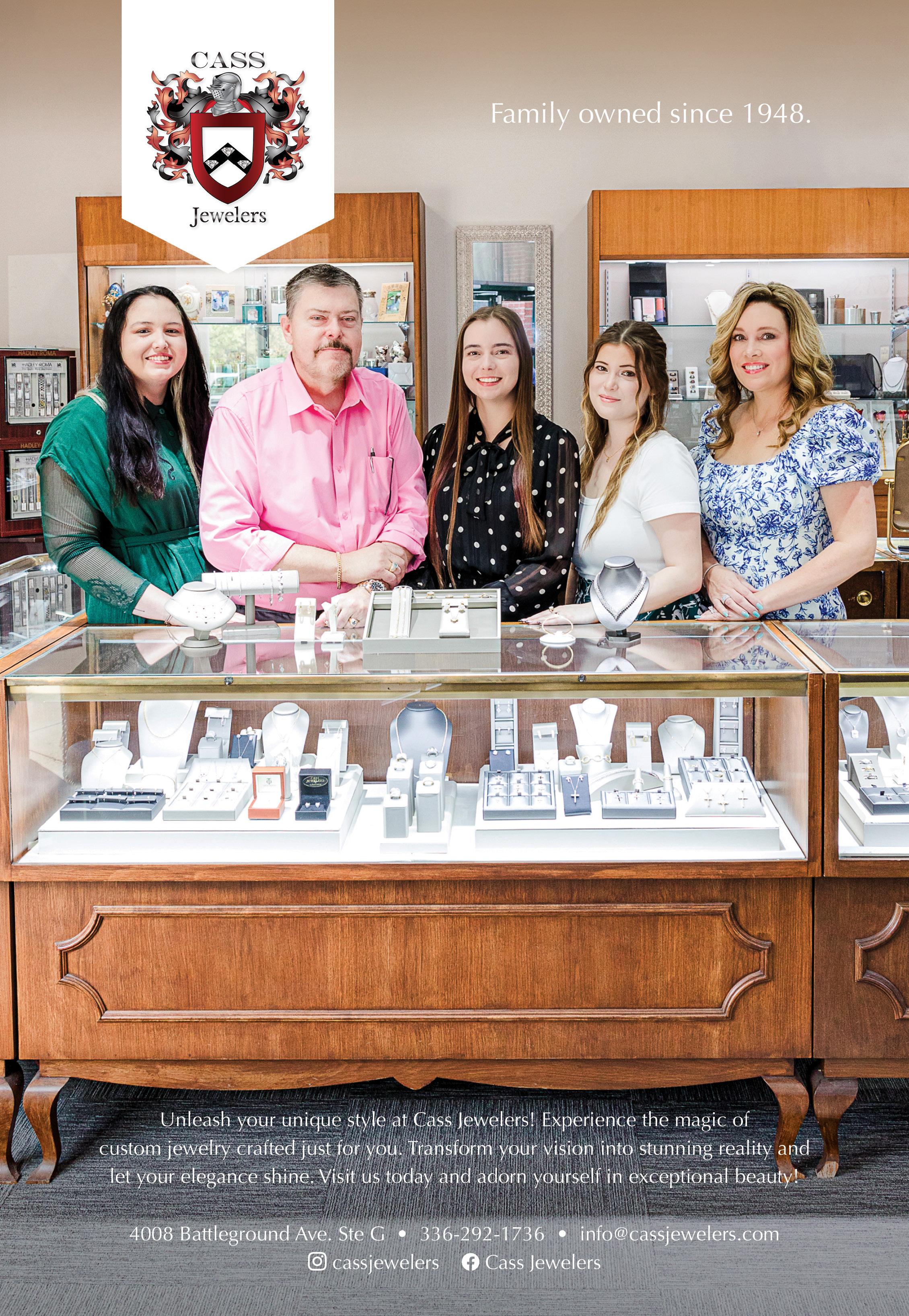



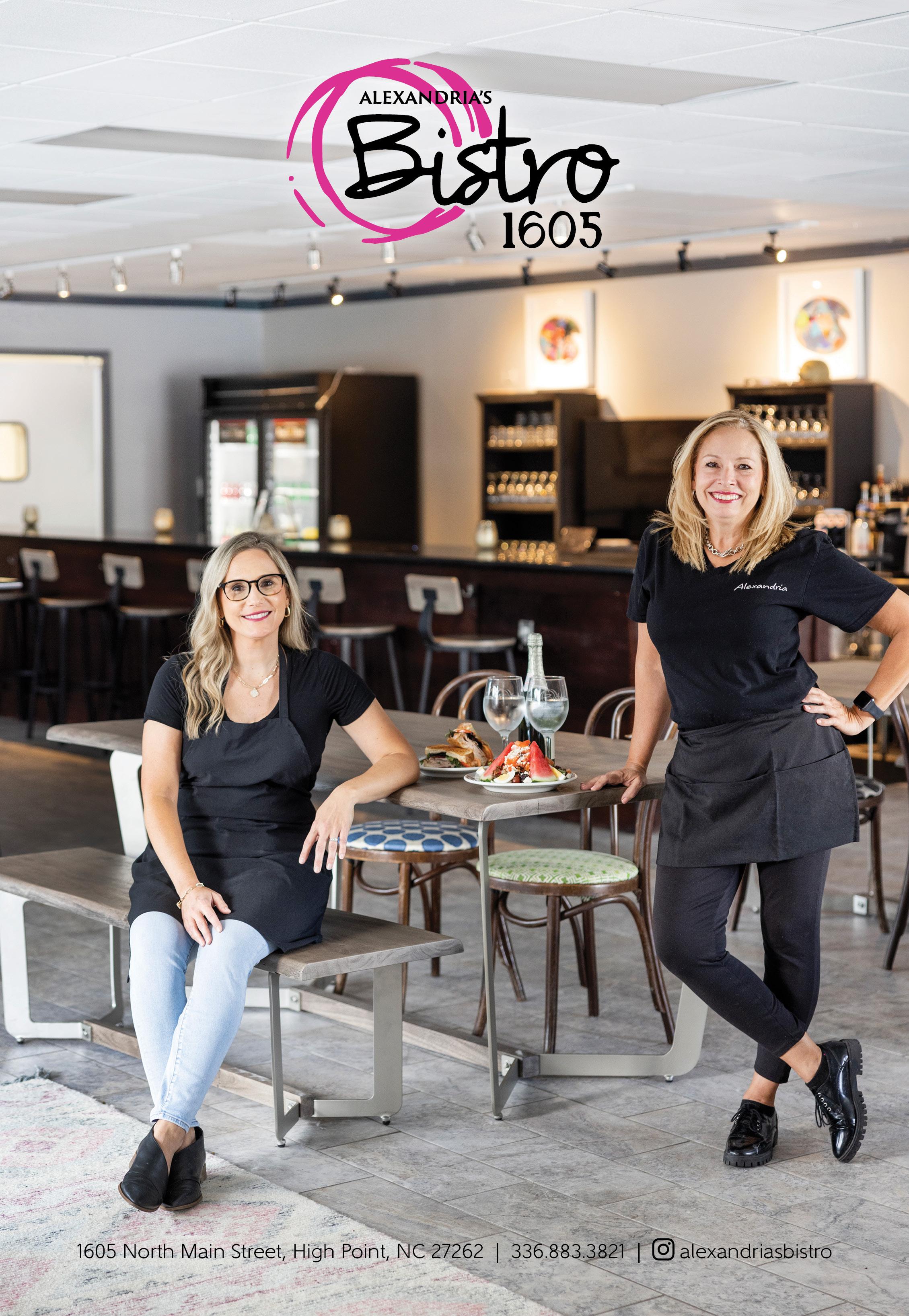
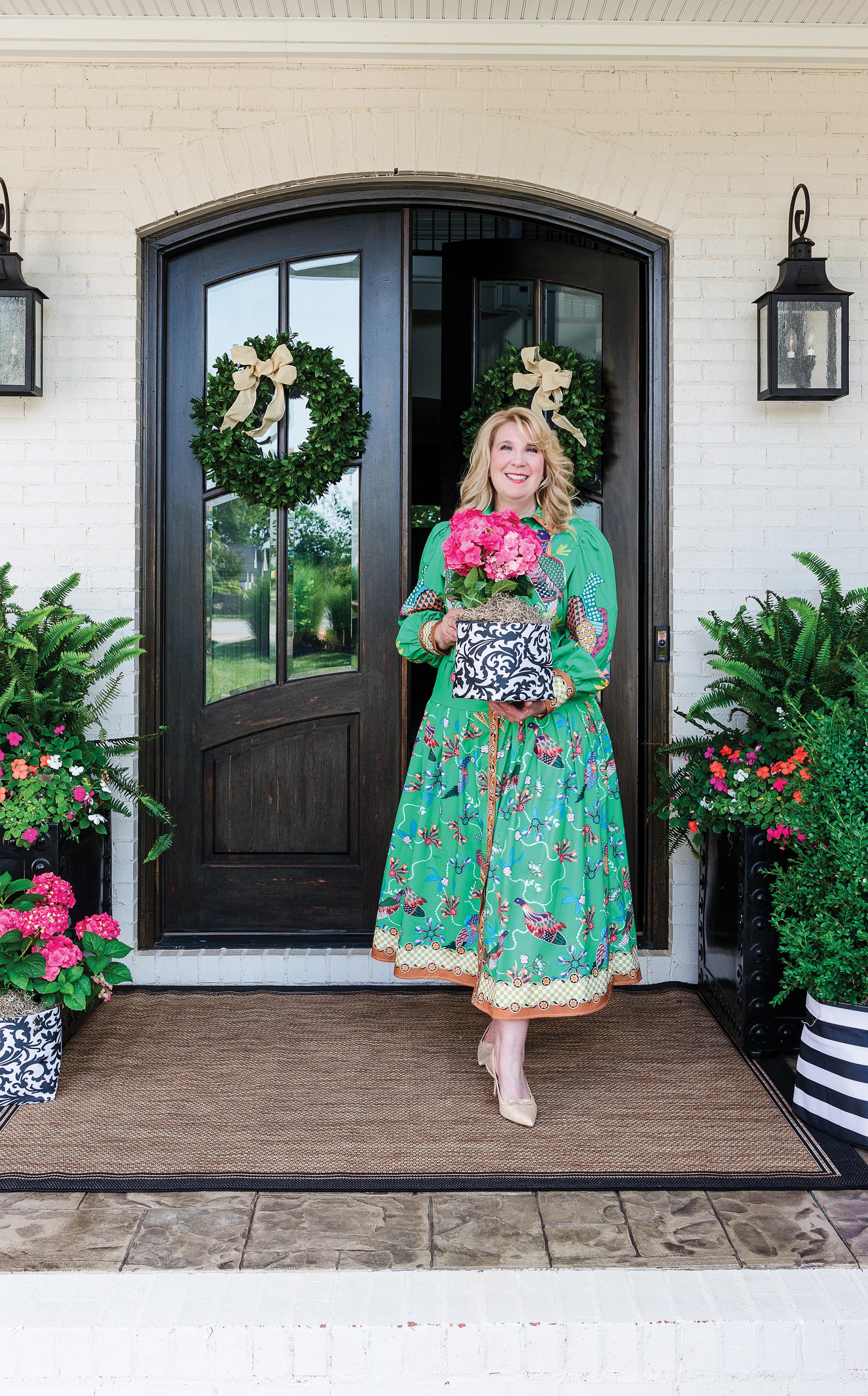
Susan Campbell’s story begins with that moment when the last child leaves home and suddenly, the house feels different. Her son and daughter, now 26 and 28, had married their partners and started their own lives, leaving Susan with time to rediscover herself. What she didn’t expect was that flipping through her favorite decorating magazines would change everything.
“I was looking through Veranda and Southern Living, just getting inspiration as I always do,” Susan recalls from her Oak Ridge, North Carolina home. “I saw this gorgeous house with the most beautiful plants staged outside, but my eye kept going to how they had wrapped burlap around the base of the shrubs. I thought, ‘Florists have been doing that for years, but what if we used something that actually showed our personality?’”
As someone who had spent years perfecting the interior of her home with gorgeous fabrics, beautiful art and carefully chosen paint colors, Susan was frustrated by the limited options for outdoor decorating. “We take so much time to make our interiors reflect who we are, but when we go outside, we’re at the mercy of whatever the stores allow us to have,” she explains.
“I was tired of the boring plastic pots. Brown, green, gray. Nothing that made my porch feel like an extension of my home.”
The real catalyst came when her husband found her scrambling to prepare for expected guests who were about to arrive. All her beautiful plants were still sitting in their unsightly plastic nursery pots with different crazy colors and branding. “I said
I was going to plant them, but we had people coming in 10 minutes. If I had had something beautiful to just drop them into, I could have solved that problem instantly and still had time to finish getting ready.”
From that inspiration came So.CachePot. These elegant fabric plant covers instantly transform ordinary nursery pots into sophisticated design elements. The business name South 23rd comes from Susan and her husband’s first home at 409 South 23rd Street in Richmond, Indiana, where they lived 31 years ago.
Getting from idea to product wasn’t easy, though. Susan had been in sales, but this was completely different territory.
“This was foreign to me. I didn’t know how to have something manufactured. It wasn’t my wheelhouse at all,” she admits. What followed was a lot of trial and error. Susan worked with multiple manufacturers before finding the right fit. “Everything comes in threes,” Susan laughs. “The third manufacturer was the charm. Trotter Sewing Company in Asheville, North Carolina.
Things really picked up when she became one of 10 first-place winners in a contest during Leanne Morgan’s “Just Getting Started” tour. The comedian had partnered with Vanity Fair to support women entrepreneurs launching businesses later in life. A friend encouraged Susan to apply, recognizing the parallel between their stories. While Susan didn’t win the monetary grant, the recognition was meaningful. “It really connected because she was in her fifties, she was starting, and I started this when I was 52.”
Trust yourself.
If you love something, if it gives you pleasure, then you can’t do it wrong.
They’re third generation, and they’ve been amazing to work with. They understand that I’m a small business, and we’re flexible with each other.”
The product line evolved as Susan figured out what worked. She settled on three sizes to accommodate different planting needs. The specialized fabric has a PVC lining that gives the covers their ability to stand beautifully on their own, and Susan was determined to keep production in the United States.
When Susan launched South 23rd in August 2023, she was packing products on sawhorses and a door in her unfinished basement. But she made the space her own, installing three brass chandeliers she found on Facebook Marketplace. “It’s my space,” she says simply. The business has grown since then. She now has proper packing tables, though she kept those beautiful chandeliers.
Since then, Susan has been building her business one craft show at a time. “When I explain how So.Cache Pot works, people say, “That’s a great idea. I’ve seen nothing like this.” She even had an artist create a life-sized red door replica from their original South 23rd Street home, complete with the “409” address number, which she uses as a booth backdrop. Now Susan is setting her sights higher, having applied for Garden & Gun magazine’s “Made in the South” award and hoping to eventually showcase South 23rd at Magnolia Market at the Silos in Waco, Texas.
The classic black and white stripe pattern has been Susan’s signature, but she’s expanding based on what customers ask for. “I kept getting asked for blue and white, so I created a blue damask pattern that’s in production now. This fall, I’m planning to introduce tartan plaid.”
Now patent pending and looking at boutique retail opportunities, Susan offers this advice to others hesitating to pursue their dreams: “Trust yourself. If you love something, if it gives you pleasure, then you can’t do it wrong. Our spaces are very personal and intimate to us, and sometimes we don’t trust ourselves enough.”
For Susan, it turns out the best business idea was the one that solved her own problem, one beautiful porch at a time.
– Kathryn Smith, editor-in-chief



Creating harmonious spaces within your home or office with the power of color in artwork is important because it connects directly to your interior design and overall aesthetics. Using different colors can significantly impact our emotions and mood. When it comes to selecting artwork for your home or office, choosing the right color palette is crucial in setting the ambiance for your space. Understanding the psychological effects of color is key, whether you want to create an energetic space, a calming retreat or an elegant, sophisticated setting.
1. Define your desired mood for the space: Envision what you want to create—a cozy and warm environment for social gatherings, a serene sanctuary or an inspiring space for creativity. Selecting your color palette and incorporating the right pieces of art can achieve this.
2. Color psychology matters: Colors evoke specific responses.
ORANGE: warmth, enthusiasm, vitality
GREEN: renewal, balance, harmony
BLUE: tranquility, serenity, relaxation
YELLOW: energy, happiness, optimism
BROWN: grounded, natural, mellow
RED: energizing, powerful, passionate
LIGHT PINK: soft, healing, playful, peaceful
HOT PINK: bold, exciting, vibrant
3. Incorporating color into your space: If the design trend is a clean white-on-white setting or neutral gray tones, the pop of color in your interior design will rely heavily on your artwork (paintings, glass, pottery) and will make a huge impact in your space. For example, bold strokes of red in an abstract painting can create a strong focal point and inject energy into a room, while soft hues offer tranquility, like those found in landscapes and seascapes.
4. The impact of natural light on color: Natural light impacts how colors appear in your home. For example, a color that looks vibrant in natural light may seem muted in artificial lighting. Test colors in the actual space and at different times of the day before making a final decision. This principle applies equally to artwork. We offer “try before you buy” services, bringing pieces directly to clients’ homes or offices so they can live with them for several days before making a decision. Artwork appears differently depending on the lighting— whether it’s morning or evening light, sunny or cloudy. We want our clients to love everything they purchase, and we make sure they are 100% happy.
If you would like a free art consultation, reach out to The O’Brien Gallery, and we will have fun exploring color and fabulous options for your palette and specific taste.
ARTFULLY
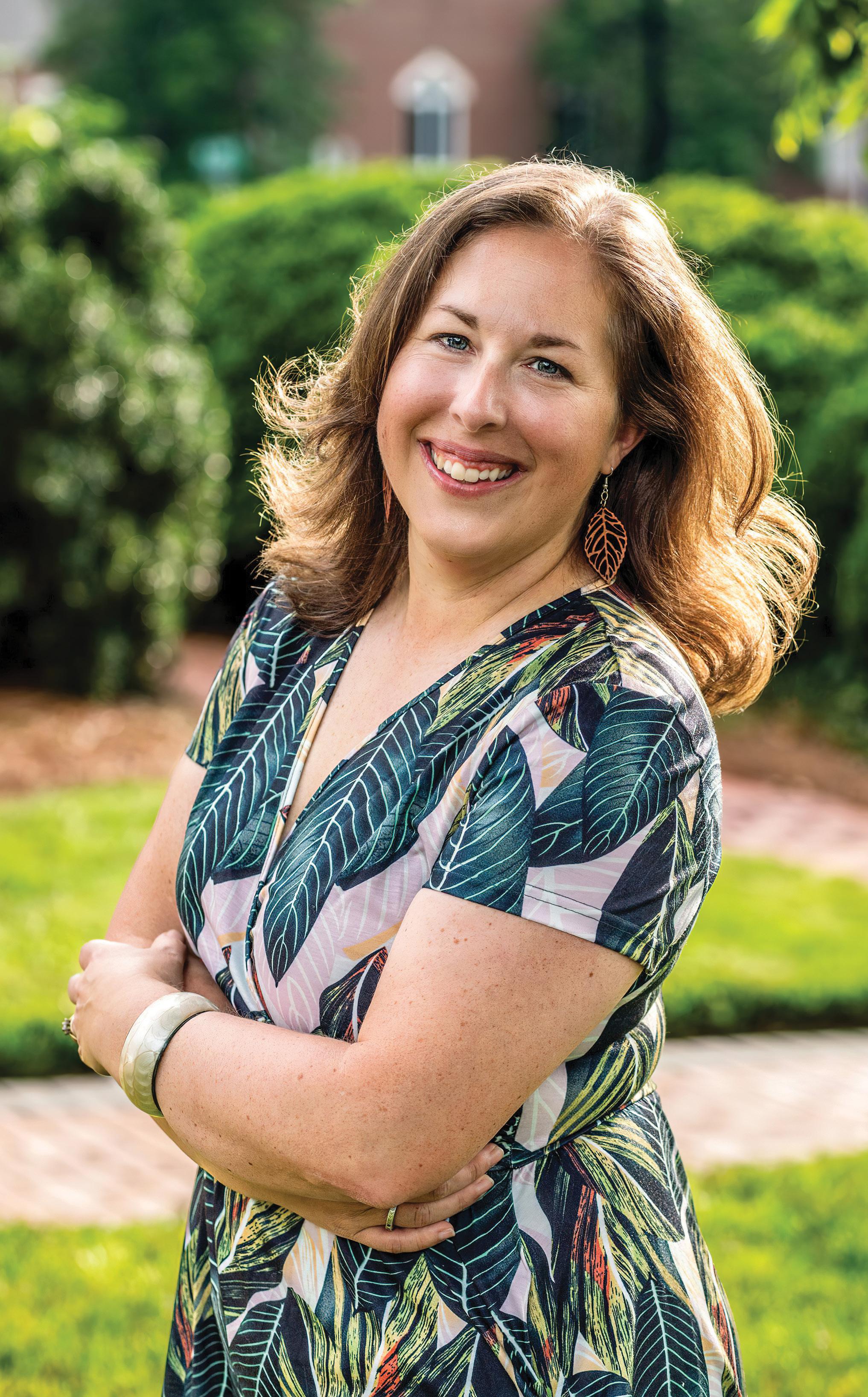
For best-selling author Meagan Church, now based in North Carolina, a quiet childhood in northern Indiana turned out to be the perfect foundation for something extraordinary. “I joke that I grew up in a northern Indiana cornfield, and it’s really not an exaggeration,” she says. “My parents bought an acre of farmland and built a house there, in a very quiet, flat setting. While I was always fascinated by big city living and dreamed of moving to New York City. Instead I was riding my bike down dirt roads, living a peaceful childhood.”
But this small-town beginning has become a powerful literary voice bringing forgotten women’s stories to light. “Now looking back, I understand how that sort of upbringing really fostered the creativity and imagination I need to do what I now do,” she says.
The path to becoming a published author took time. Meagan graduated with an English degree in creative writing and had big plans. “When I graduated college, I thought that would be the moment I would sit down and write that great American novel,” she remembers. Reality had other ideas. “I had a marriage and a mortgage, so I needed a day job and settled in at an advertising agency.”
Even with the demanding schedule, she kept writing. Moving from short stories to novels was tough. “Being able to hold a story together for about 80,000 words is a very big task, she explains. “I wrote two practice novels that will never see the light of day, but
they were necessary in order to figure out how to tell a full-length story.”
After years in South Bend, Indiana, Meagan and her husband decided to move their family south to Matthews, North Carolina. “We have absolutely loved it here. The state is just so beautiful and welcoming,” she notes.
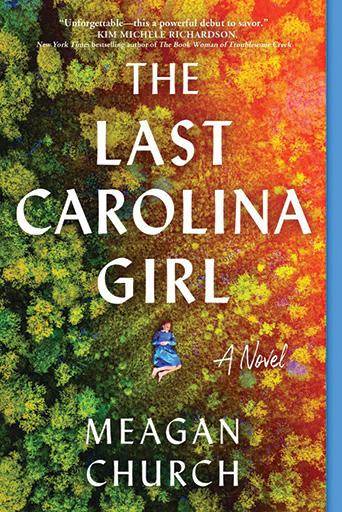


Moving to North Carolina became part of Meagan’s writing journey in an unexpected way. While researching what would become The Last Carolina Girl, she discovered her new home state had a dark history with forced sterilizations. “North Carolina had the second most of any state, second only to California, and Mecklenburg County had three times the rate of any other county in the state,” she shares.
This discovery hit close to home. Meagan’s great-aunt had been sterilized by the state of Indiana when she was just 12 years old. “That was something our family did not know until after she passed away at the age of 92,” she explains.
“In trying to make sense of how this could have happened to her or anybody else, I fell down that rabbit hole of research,” Meagan explains. “And the more I learned about that practice of eugenics, the more the character started coming to mind and started speaking to me. The story is not my aunt’s story, it was simply inspired by the fact that she had been sterilized. That was how I discovered my passion for historical fiction.”
Her second novel, The Girls We Sent Away digs into another hidden chapter of women’s history. The idea came after watching “The Handmaid’s Tale,” which led her to research another forgotten chapter of history. “It explores the maternity homes that operated from 1945 to 1973. During this time, roughly four million young unmarried women were sent away to these facilities, where many were pressured or forced to give up their babies for adoption.”
When asked what drives her to keep exploring these difficult topics, Meagan explains, “Right after college, I started reading what I considered to be more modern books; most of those authors were male, and that was the era of the everyman story. Therefore, my goal is to explore the stories of every woman.”
Her protagonists aren’t famous women making history. They’re ordinary women facing extraordinary circumstances. “They’re all just everyday women who are simply trying to live their lives when they come up against an actual practice that has happened within our society.”
Readers have written to her, sharing their own family stories connected to the events she writes about. One moving
message came from a woman who finally understood her troubled sister after reading The Girls We Sent Away. Her sister had been sent to a maternity home and lived with trauma for years before dying young.
This connection goes far beyond what Meagan expected. “I never considered that sort of impact on people’s lives,” she admits. “Scientific studies show that reading fiction increases empathy,” Meagan says. “By experiencing other people’s stories through fictional characters, we’re training ourselves to better empathize in real life.” Her work proves that historical fiction can heal and create understanding across generations.
With her third novel, The Mad Wife, coming out this November, she continues exploring how women were mistreated throughout history. “I think we could all use a little more compassion and understanding these days,” Meagan reflects, and through her powerful storytelling, that’s exactly what she’s delivering, one forgotten woman’s story at a time.
– Kathryn Smith, editor-in-chief

